
India has been the location of several of the world’s first civilizations. Whenever we browse through history, the country’s name appears in gold. It has witnessed several strong kingdoms, major emperors, spiritual gurus, cultural groups, etc. leave behind distinctive traces of heritage. Today India has many UNESCO World Heritage Sites due to its glorious history. In India, the interesting monuments and historical places stand tall today to tell visitors their narrative of joy, sadness, courage and sacrifice. India’s magnificent history and cultural variety provide a powerful blend of tourist attractions that attract millions of travellers each year. The rich heritage of India is sufficiently reflected throughout the country in the different temples, palaces, monuments, and forts.
UNESCO has conferred the title of UNESCO World Heritage Sites on such heritages and remains, that display outstanding creative art that illustrates major historical milestones, include enormous natural beauty, and represent exceptionally any culture or civilisation.
1. Taj Mahal, Agra
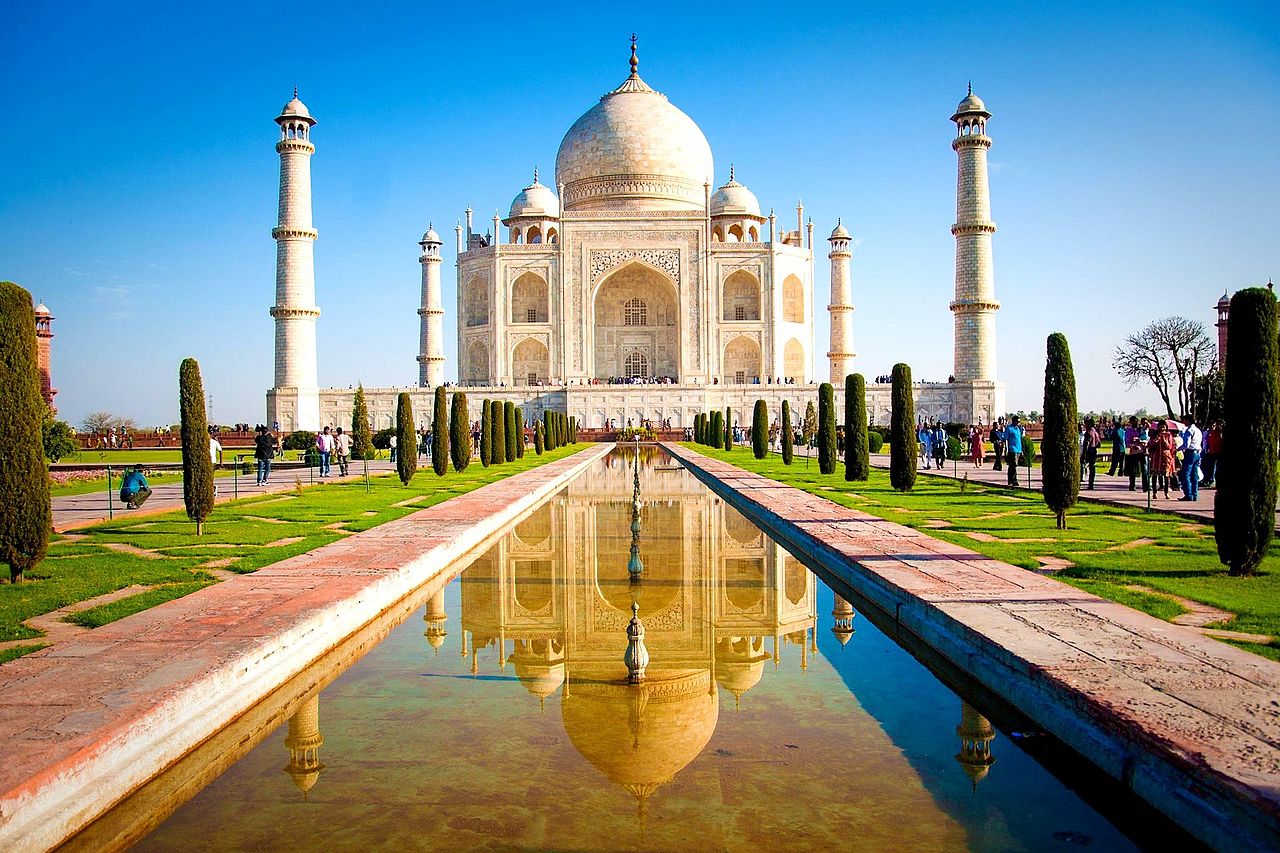
Listed Year: 1983
Taj Mahal is one of the ‘seven wonders of the world’ along with being a World Heritage site. In the former capital of the Mughal empire-Agra, this stunning monument is fashioned entirely out of white marble. It is located on the banks of the Yamuna River in the city.
It was created in the remembrance of his beloved wife, Mumtaz Mahal, by the Mughal Emperor, Shah Jahan; it stands as a symbol of pure and everlasting love. Taj Mahal, which is considered to be a masterpiece, combines the best architecture of several Mughal buildings. The wall of this masterwork reverberates her beauty. The path to this splendour is full of royal trees and a straight stretch of water leads up to this huge palace.
This charming beauty is more attractive at night, as the moonstones shine on his grave and make it look ethereal.
2. Red Fort, Agra
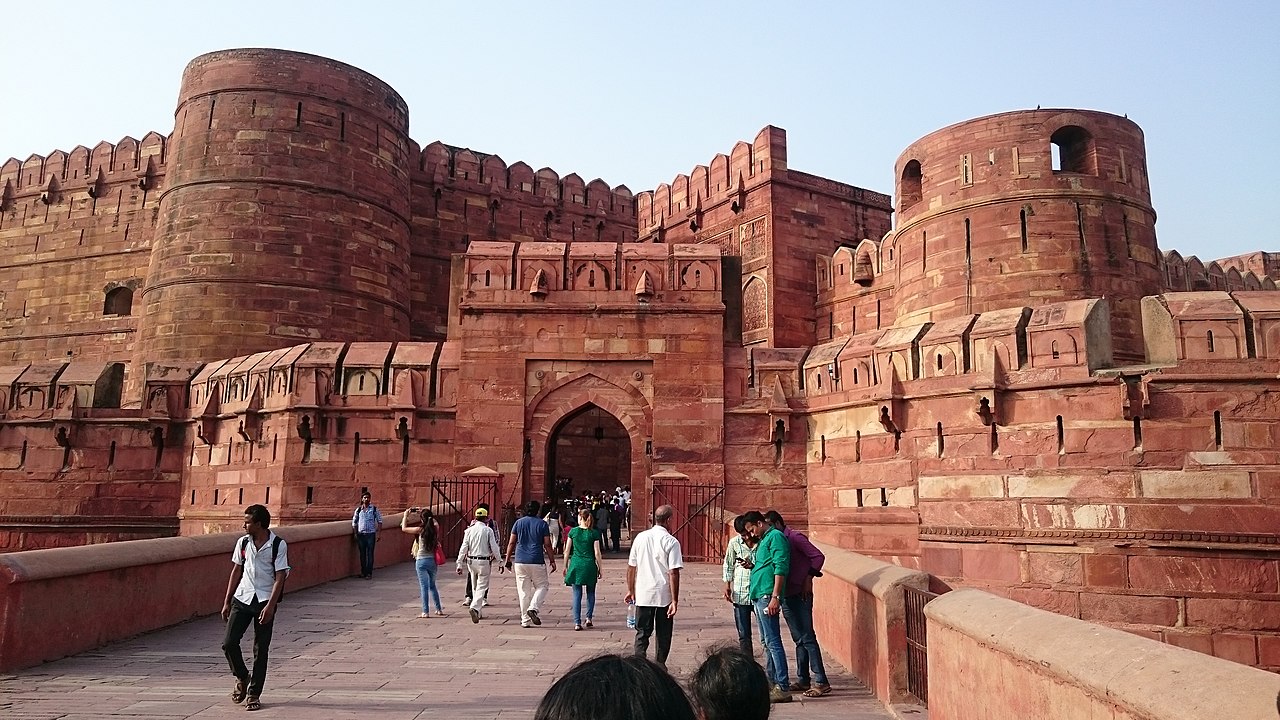
Listed Year: 1983
Agra Fort is located in the Mughal city of Agra just two and a half kilometres from the famed Taj Mahal. It was the Mughal dynasty’s primary residence until 1638, when the capital was moved to Delhi from Agra. Because of its outstanding Islamic architecture, it is recognised as a UNESCO World Heritage Site.
Akbar established the fort between 1565-1573 on the banks of the Yamuna. The wall is enclosed with red sandstone, which is 2.4 km long and 21 metres high. It consists of two large ornate gates, ornamented with lovely patterns in white marble with colourful glazing. These designs depict illustrations of living beings, not found in any other Islamic edifice in India.
3. Ajanta Caves, Maharashtra
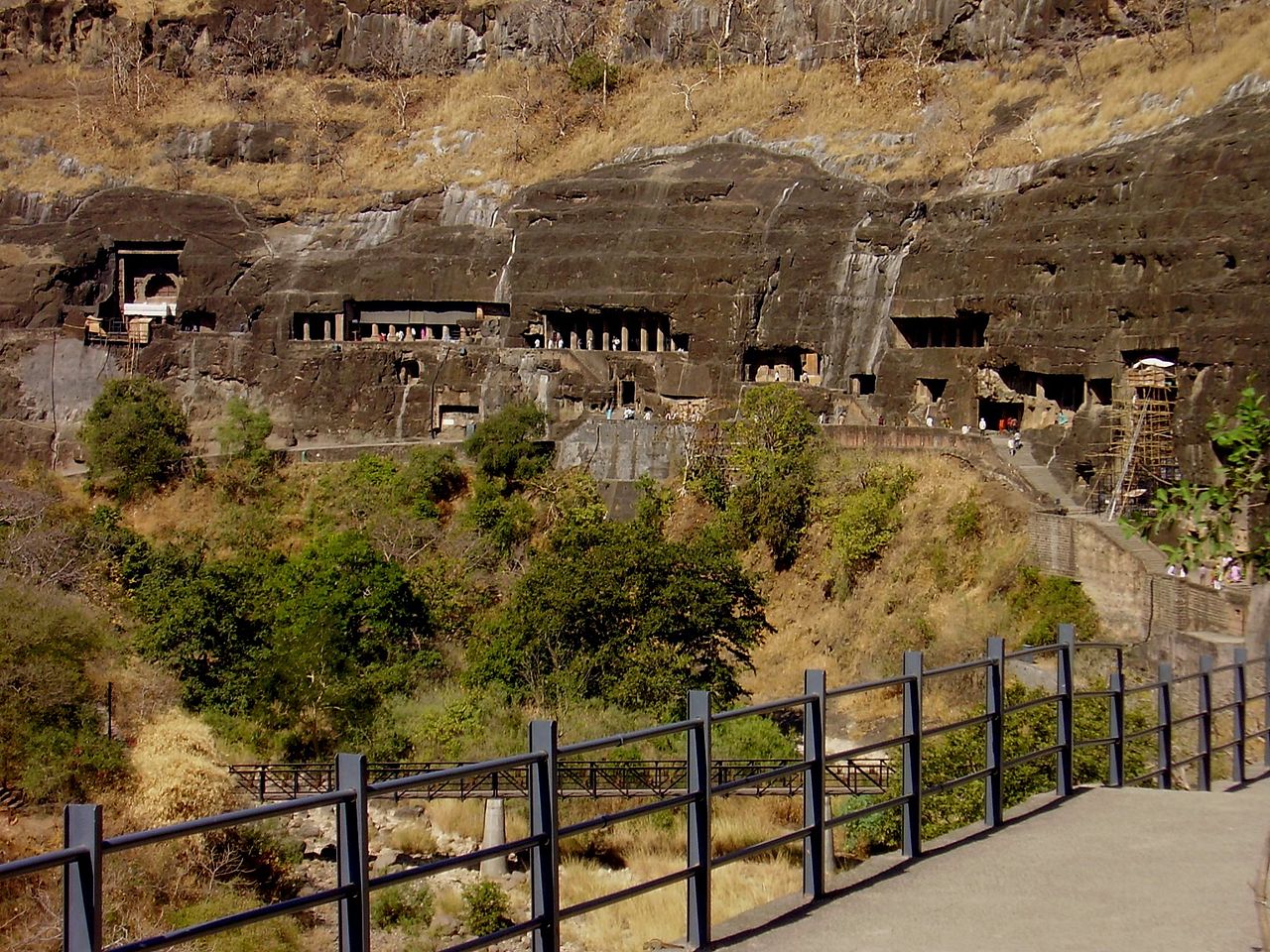
Listed Year: 1983
The Ajanta caves dating back from the Second Century BC are situated near Aurangabad in Maharashtra. These Buddhist caves are regarded as one of the most amazing arts of ancient times. About thirty of them remained for a good deal of time abandoned as they were concealed by impenetrable woods before a British officer rediscovered them. The fact that these caves were built from one piece of rock is very remarkable.
The craft of these caves are the finest and highest, and the beautiful sculptures are wonderful to gaze at. They were developed in two stages and each phase had its own artistic flair, making these caves even more charming. The life and teachings of Buddha are mostly depicted in the sculptures, designs and carvings.
4. Ellora Caves, Maharashtra
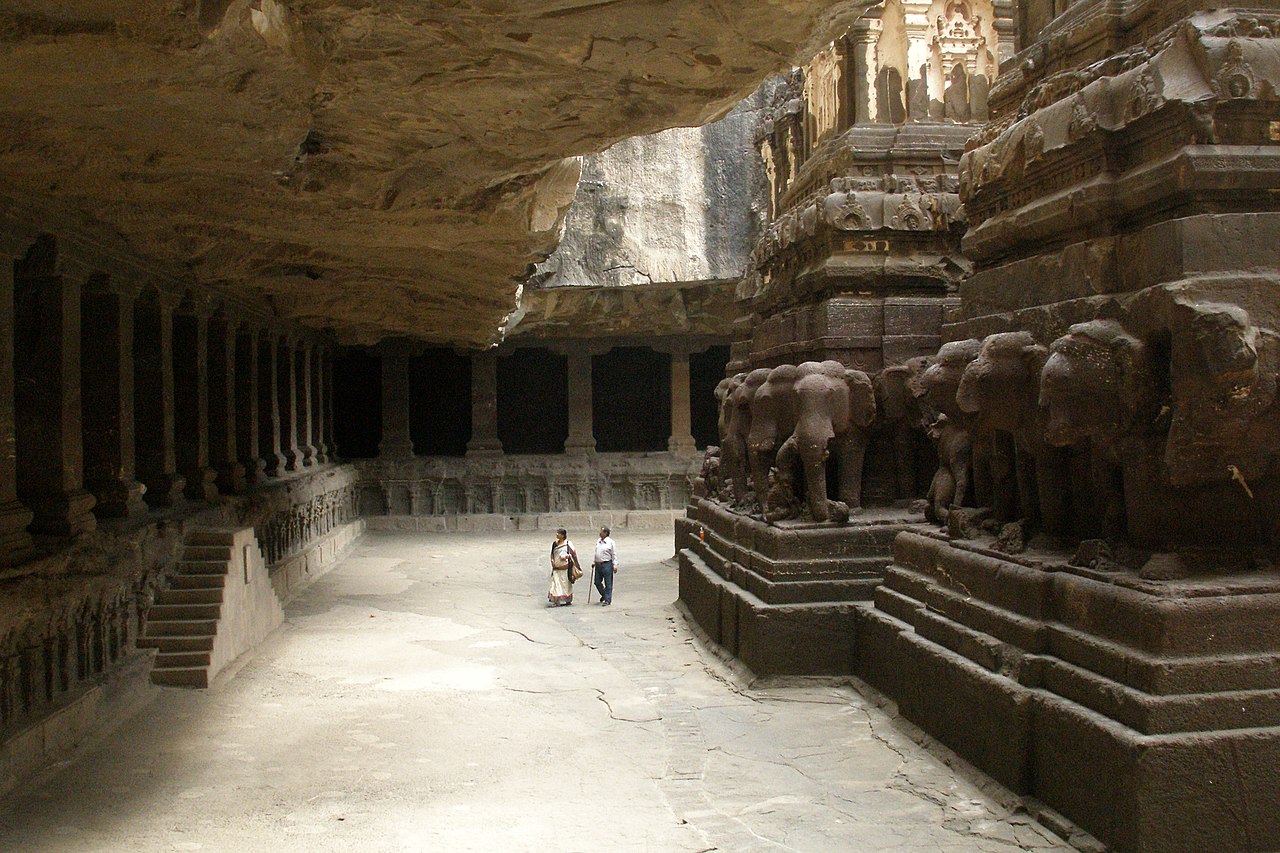
Listed Year: 1983
The Ellora Caves, which is in the northeast of Aurangabad, is a renowned world heritage site in India and an archaeological site. The Caves of Ellora are famous for their Indian rock-carved architecture. There are over 34 rock-cut temples and caves, dating back to 600 to 1000 AD, which is vital to comprehend the lives of these people. The presence of the temples and sculptures in Hindu, Buddhist and Jain depicts the tolerance extending to many beliefs and faiths in Indian Ancient History. The site explored is made up of the Charanandri Hills, the rock-cut Hindu Buddhist and Jain temples and the 5th and 10th Centuries Viharas and Maths. Built by the Rashtrakuta dynasty, these were listed by UNESCO for their cultural significance as World Heritage Sites.
5. Sun Temple, Odisha
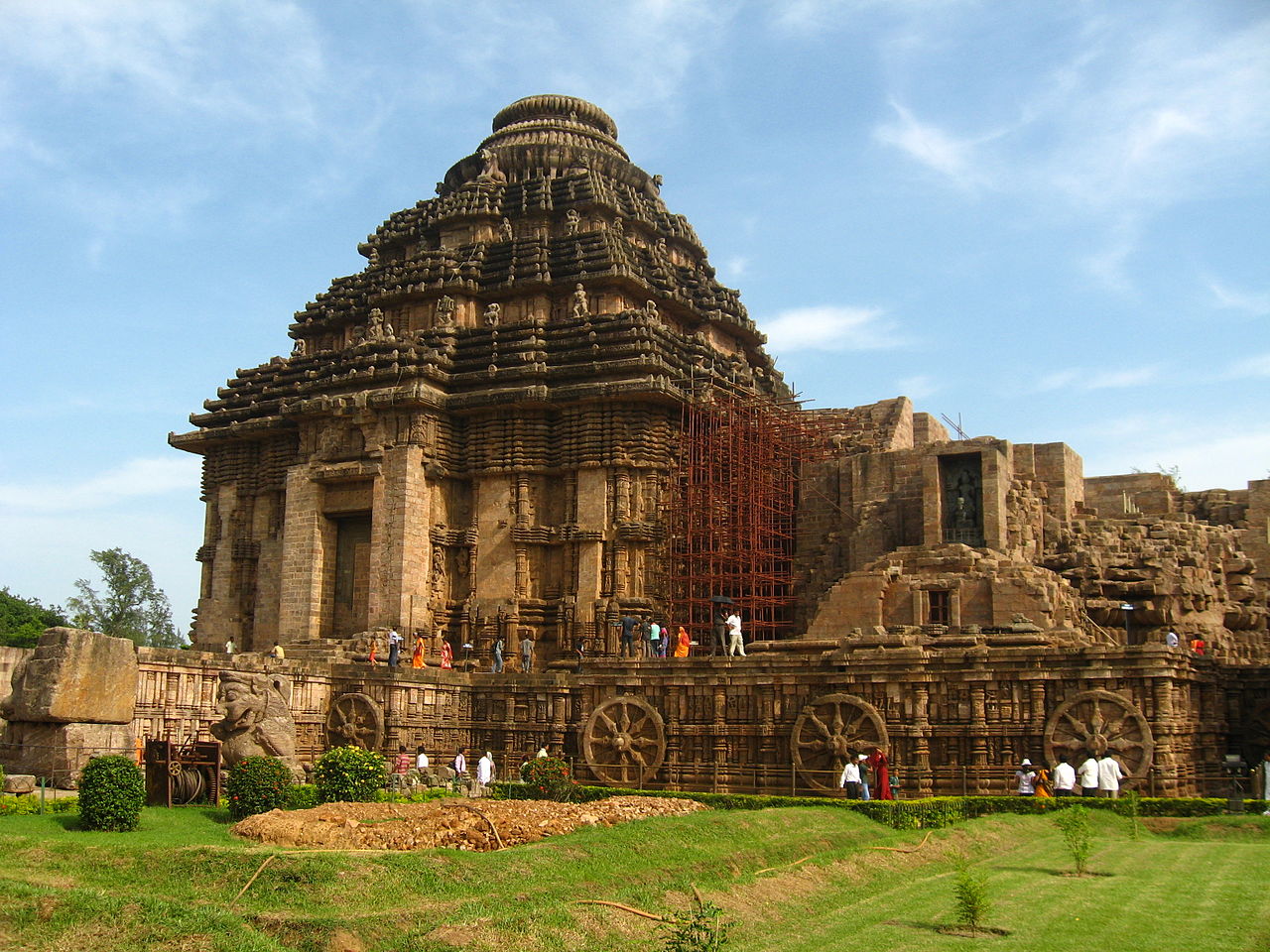
Listed Year: 1984
The Sun Temple at Konark is a temple from the 13th century located in Konark, Odisha, not so far from the famed Puri beach city. Built In the Eastern Ganga Dynasty by King Narasimhadeva I in about 1250, this temple was built in the form of a huge Ratha (a cart) and dedicated to the Sun God (as the name also suggests).
The Sun Temple is in the form of a huge chariot with a carved stone wheel, pillars and walls, which is led by six horses, magnificently sculpted. It is also regarded as one of India’s largest Brahman sanctuaries. The temple was built at the mouth of the Chandrabhaga river but since then the waterline has receded. In India, this World Heritage Site showcases Kalinga Architecture’s greatness that was once widespread in its traditional style.
It looks lovely and splendid, bearing magnificently crafted characteristics. Interestingly, the wheels actually are sundials, making them a place of interest for individuals interested in ancient astronomy.
6. Group of Monuments at Mahabalipuram
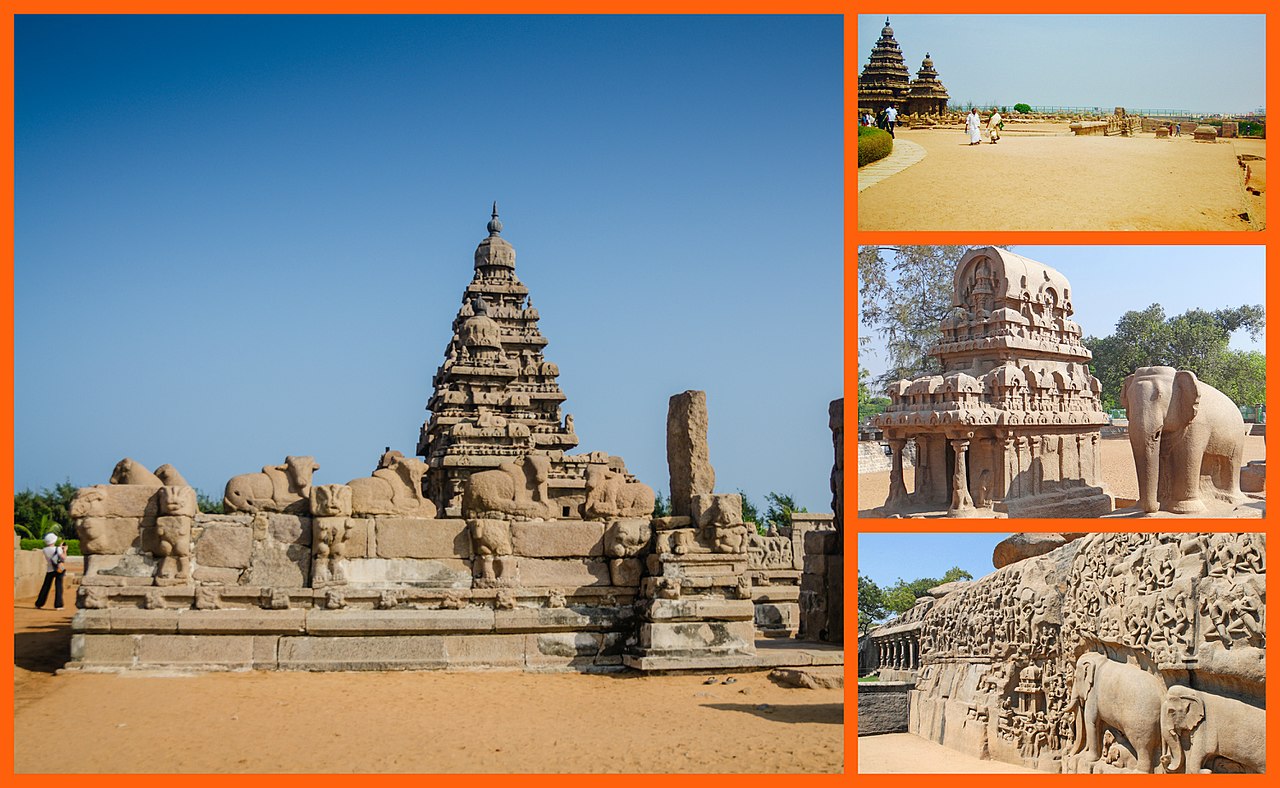
Listed Year: 1984
The Mahabalipuram Group of Monuments are a group of temples on the Bay of Bengal coast of Coromandel, approximately 60 km from Chennai. These temples were built under the reign of the monarchs of Pallava and all of them are carved out of rock.
The site comprises the main Mahabalipuram complex and forty sanctuaries with an open-air-bas-relief ( like the Ganga’s Descent). Some of the most popular are the Ratha Temples such as ArjunaRatha, DraupadiRatha, BhimaRatha that contain art of the Pallava Period, the famed cave temples as well as structural temples such as Shore temple, Olakkanesvara temple and other monuments. The site has gained prominence after Independence as a place of archaeology, tourism and pilgrimage.
7. Kaziranga National Park, Assam
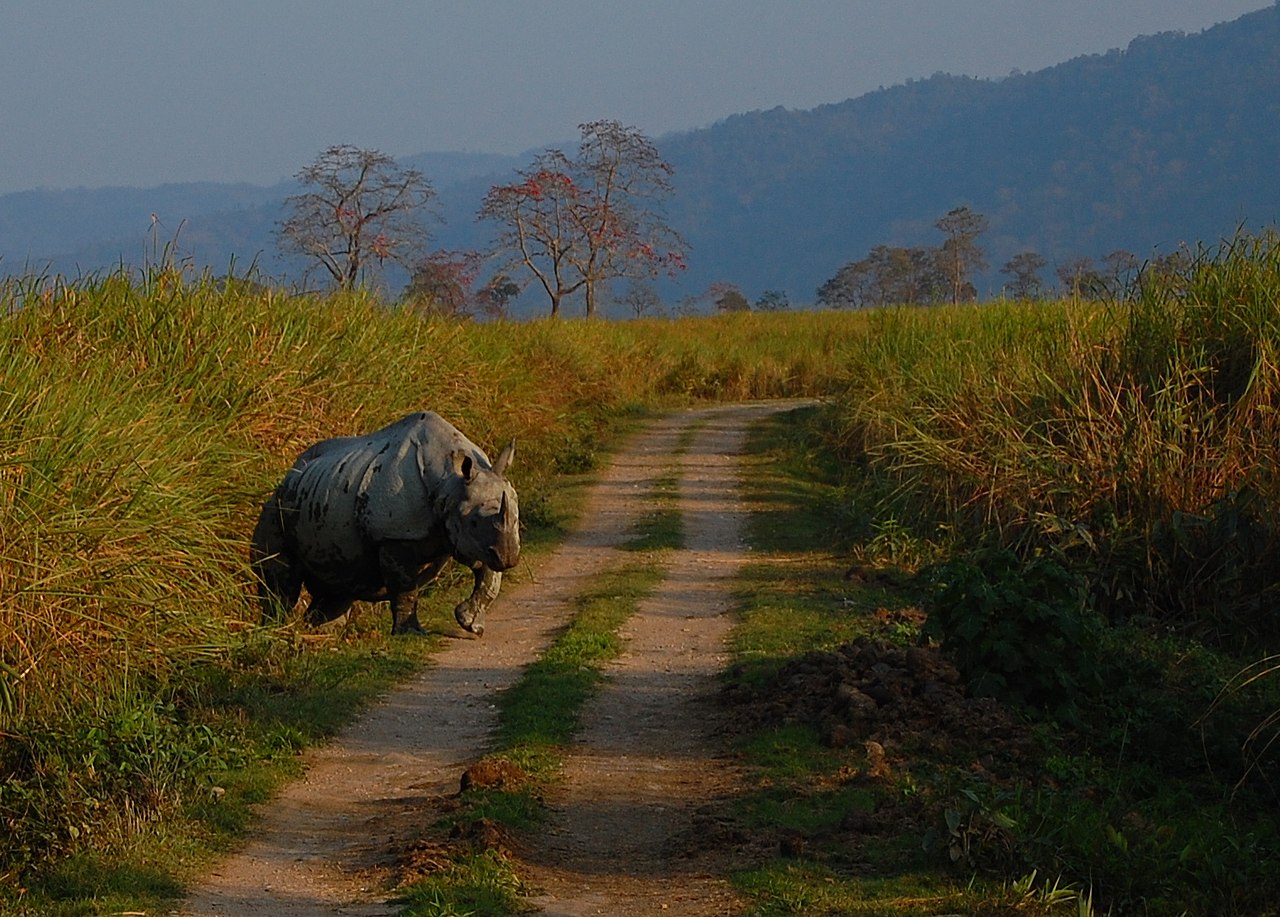
Listed Year: 1985
The Kaziranga Wildlife Sanctuary in Assam is well-known for its one-horned rhinoceroses. It is one of India’s most unspoilt natural locations. It is stated that Lord Curzon started this project in India after his wife could not see a single Rhinoceros in the region and she pushed her husband to take action in protecting the endangered animal. This park is located on the floodplains of the Brahmaputra River and mostly comprises dense wilderness and forests.
Kaziranga features approximately fifteen endangered Indian wildlife species, the most threatened of which is the Rhino. Additional creatures include a capped langur, hoolock gibbon, tiger, leopard, sloth bear, otter, wild boar, water buffalo, gaur, sambar, swamp deer, hog deer and Indian muntjac and the Ganges dolphin. Indian laws connected to wildlife conservation offer the highest level of protection to this national park. The National Park is a popular place for tourists who like to go on a natural heritage tour with its magnificent scenery and immaculate surroundings.
8. Manas Wildlife Sanctuary, Assam
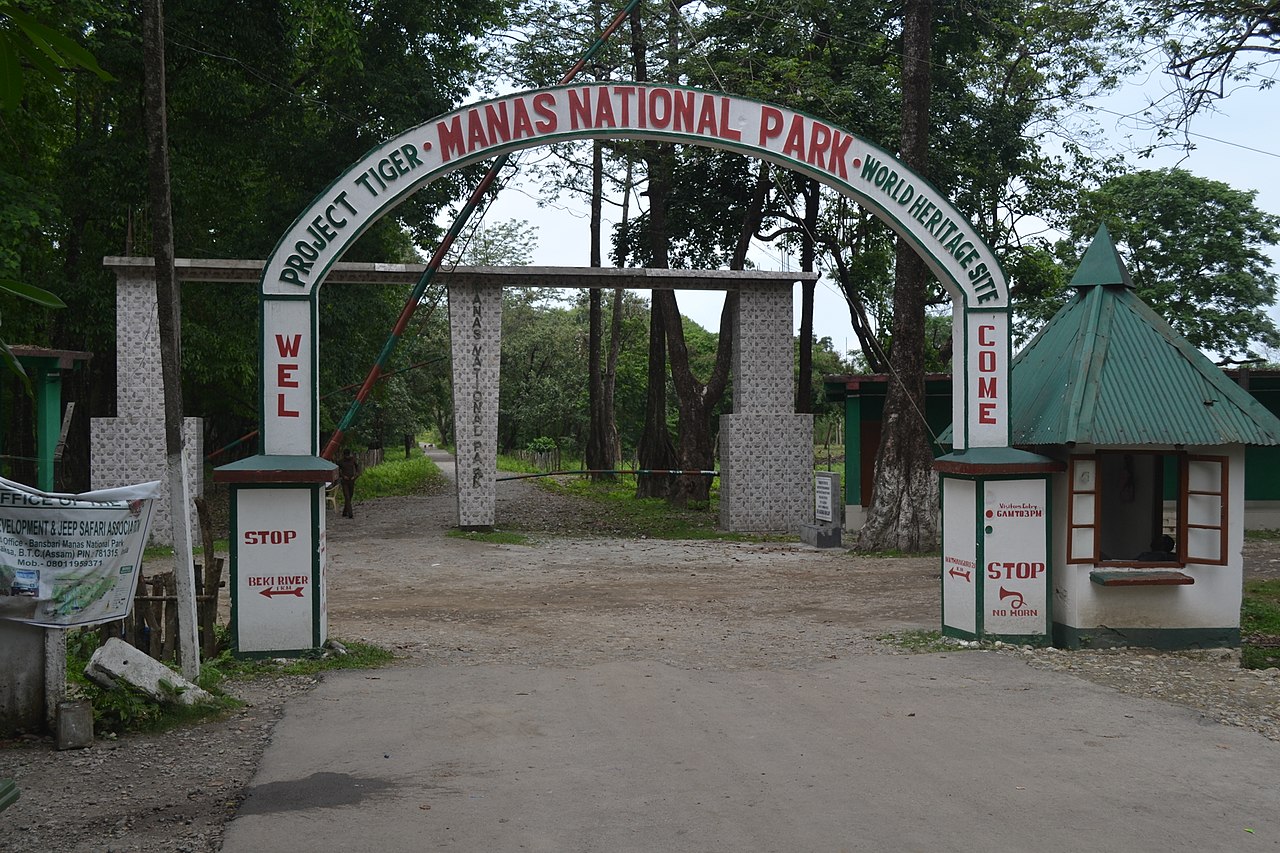
Listed Year : 1985
Manas Wildlife Sanctuary is a UNESCO World Heritage List protected wildlife reserve in India. It falls under the jurisdiction of seven Assam districts. The name of the place comes from the river Manas, which passes directly through the heart of the sanctuary.
The park is made up of two main biomes, grassland biomes and forest biomes. Pygmy hogs, Indian rhinoceros, Australian wild buffalos, capped langurs, giant Malayan squirrels, Pangolins, wild pigs etc. can be seen here. Its wealthy avifauna species also makes it one of the world’s richest regions of biodiversity.
It has been named a UNESCO World Heritage Site because of its rich and diversified flora and fauna and uncommon and endangered creatures. It is also known to be a Project Tiger and Elephant Reserve.
9. Keoladeo National Park, Rajasthan
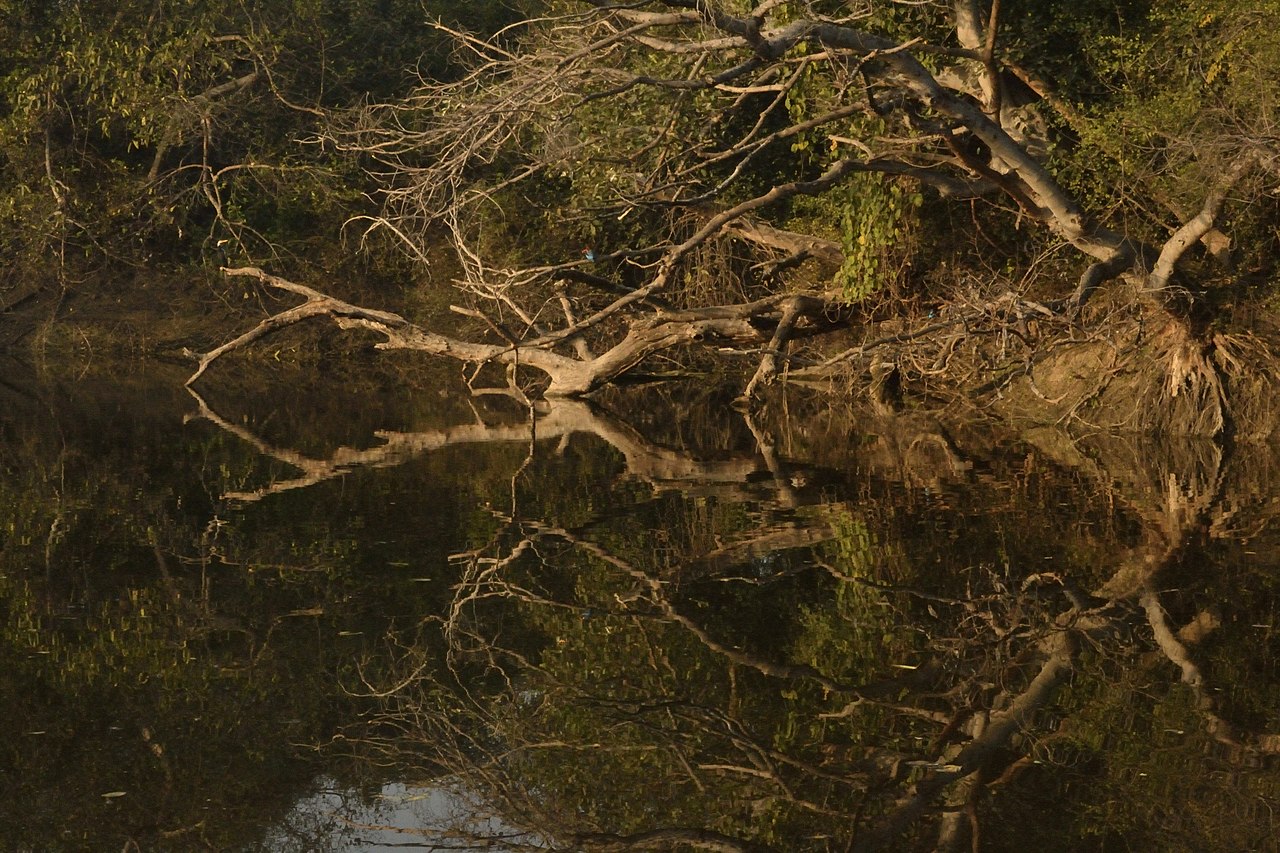
Listed Year: 1985
Keoladeo National Park, often called Bharatpur Bird Sanctuary, is a renowned avifauna sanctuary located near Bharatpur, Rajasthan. It has more than three hundred bird species, three hundred and seventy botanical species, fifty different types of fish and lizards, amphibians, snakes, turtles and so on. The park has more than four hundred fish species. It is also a popular place for studying ornithology.
Peter Scott, the founder of the World Wildlife Fund, has deemed it to be one of the world’s best bird areas. It was founded in 1982 and classified as a UNESCO World Heritage Site for its rare and endangered species habitat. It is about 29 sq km in area.
10. Fatehpur Sikri, Uttar Pradesh
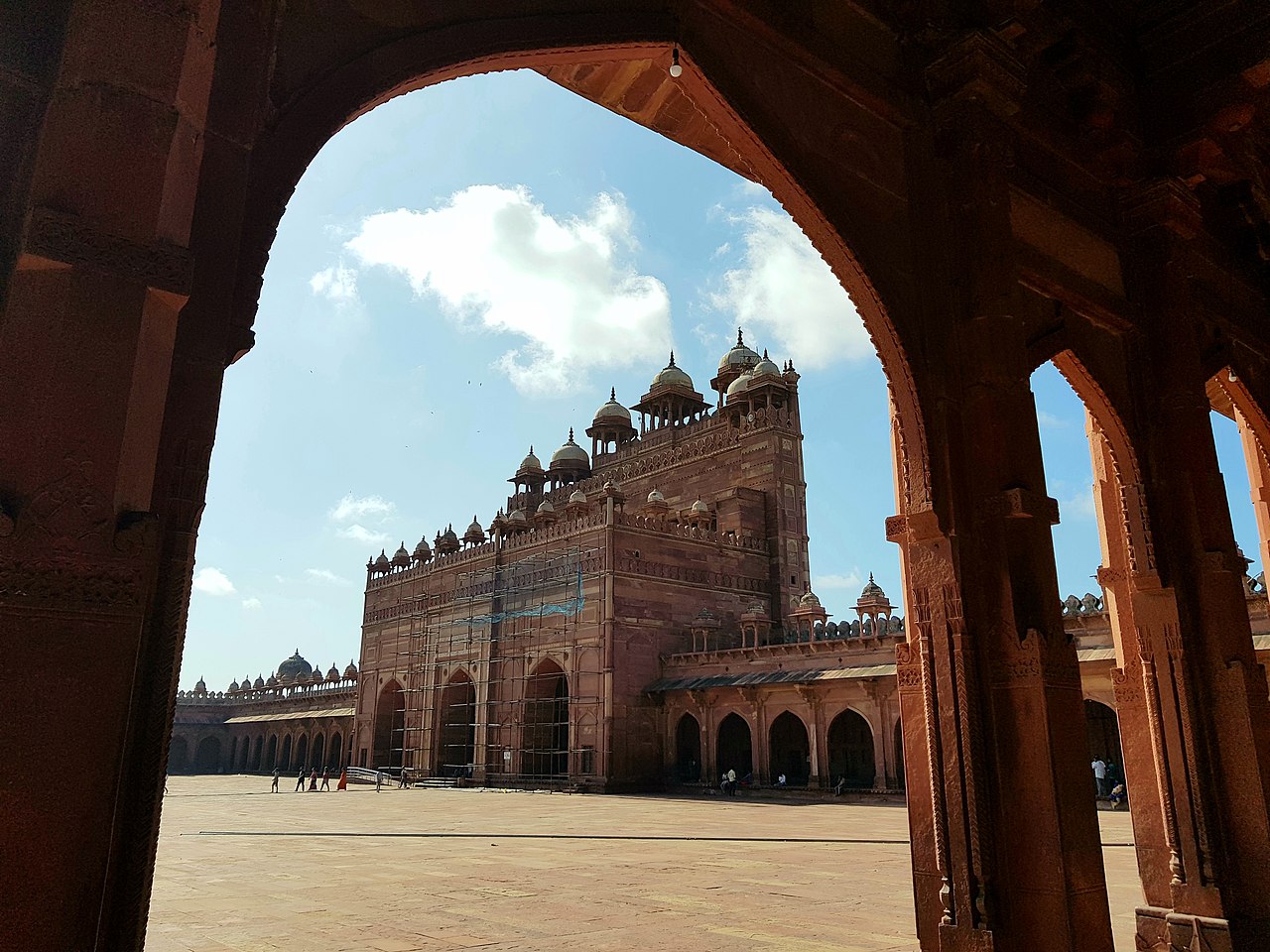
Listed Year: 1986
Before being abandoned by Akbar because of the total failure of the water delivery system, Fatehpur Sikri was the old capital of the Mughal dynasty. This was built by Akbar as a well-planned town when he decided to move his capital from Agra.
UNESCO has granted it the designation of World Heritage Site because it is one of the outstanding examples of Mughal architectural finesse. A historic visit to Fatehpur Sikri will enable you to discover some of the highly amazing characteristics of Diwan-e-Aam, Diwan-e-Khas, Jama Masjid etc. The complete complex is characterised by Buland Darwaza (literal sense: The big gate), as it is the largest gateway in the entire planet.
11. Khajuraho Group of Monuments
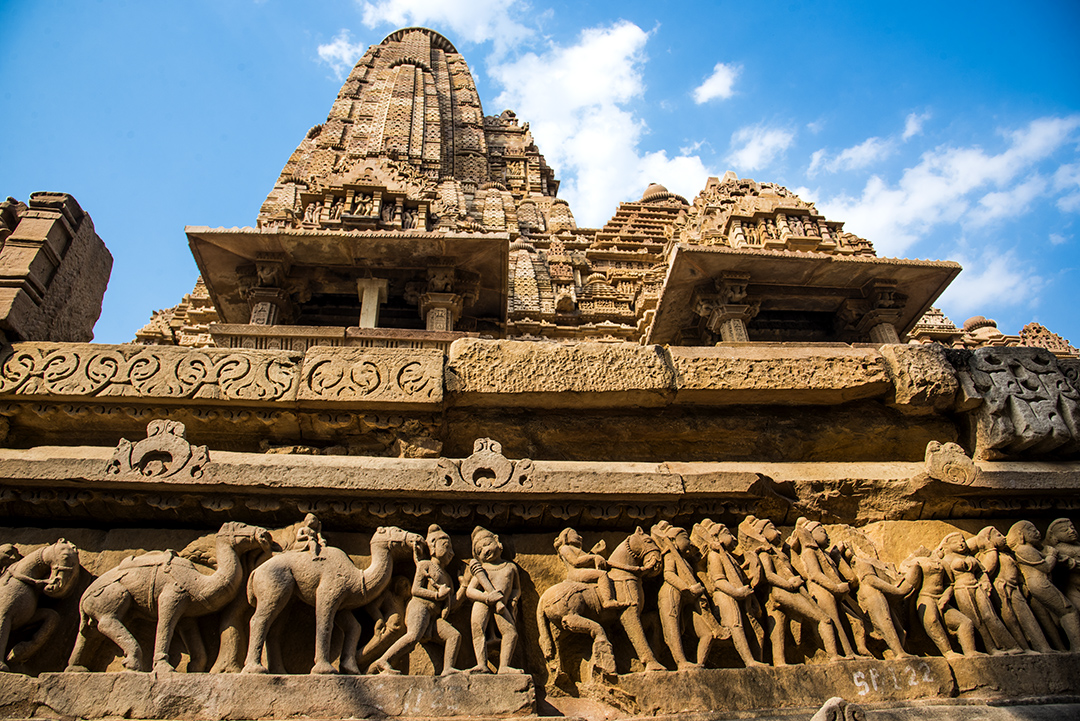
Listed Year: 1986
Khajuraho temples are an architectural achievement of the artisans of the Rajput Chandela Dynasty, located in central India – Madhya Pradesh. These were a group of 85 temples, only 20 of which survived successive efforts to demolish and neglect by rulers thereafter.
The external walls of these temples are one of the outstanding examples of the carving and are decorated with sensual works, sculptures that show everyday life and symbolic art portraying ancient Indian values. There will therefore be some great photographic prospects, which should never be missed on a heritage tour of the temples of Khajuraho.
12. Churches and Convents of Goa

Listed Year: 1986
In December 1986, the churches and convents of Goa were awarded a UNESCO World Heritage Site. These are a group of religious monuments located in Old Goa. The monuments include Goan Churches and Convents, Sé Cathedral of Goa, Basilica of Bom Jesus, Church of St. Francis of Assisi, Ruins of the Church of St. Augustine, Chapel of Santa Catarina, and Church of Divine Providence.
For the following reasons the Site has been proclaimed a World Heritage Site:
- They helped spread western art forms throughout Asia.
- They depict the work of evangelization perfectly.
- Francis Xavier’s tomb symbolises the Catholic religious influence in Asia.
13. Hampi, Karnataka

Listed Year: 1986
In North Karnataka, Hampi is a UNESCO World Heritage Site. It stands among the ruins of Vijayanagar’s ancient and rich kingdom. The Hampi ruins represent the outstanding Dravidian style of art and architecture as well as a collection of historical locations. Virupaksha Temple, still an important religious centre for the Hindus, is the most important heritage monument on this site. There are several more monuments that make up the site, and collectively they are called Monuments of Hampi. Other notable ones are the complex of Krishna temples, including Narasimha, Ganesa, Hemakuta temple groups; the Achyutaraya shrine complex Pattabhirama temple complex,Vitthala temple complex, Lotus Mahal complex; numerous puras or bazaars circling the temple complex, and also living sections and residential spaces.
14. Chola Temples, Tamil Nadu

Listed Year: 1987
The Great Living Chola Temple is a set of three temples built in the Chola Dynasty. The temples were built under the Chola kingdom in the southern part of India. The most important of all these temples were the Brihadisvara Temple, the Gangaikonda Cholapuram Temple and the Airavatesvara Temple. Under Rajaraja 1’s reign, the temple of Brihadisvara was a landmark in the architecture of Chola. Rajendra 1 was the patron of Gangaikondacholapuram’s temple devoted to Lord Shiva. And when Rajaraja II came, the Airavatesvara temple was created which is why it differs from the other two.
The architecture of the Dravidian architecture is located in the state of Tamil Nadu. Tamil art and literature flourished as anything under the reigns of Cholas, and the Chola temples are a wonderful illustration. These three temples symbolise the Tamil people’s ancestral culture and traditions and form an indissoluble part of their ancient past.
15. Group of Monuments at Pattadakal
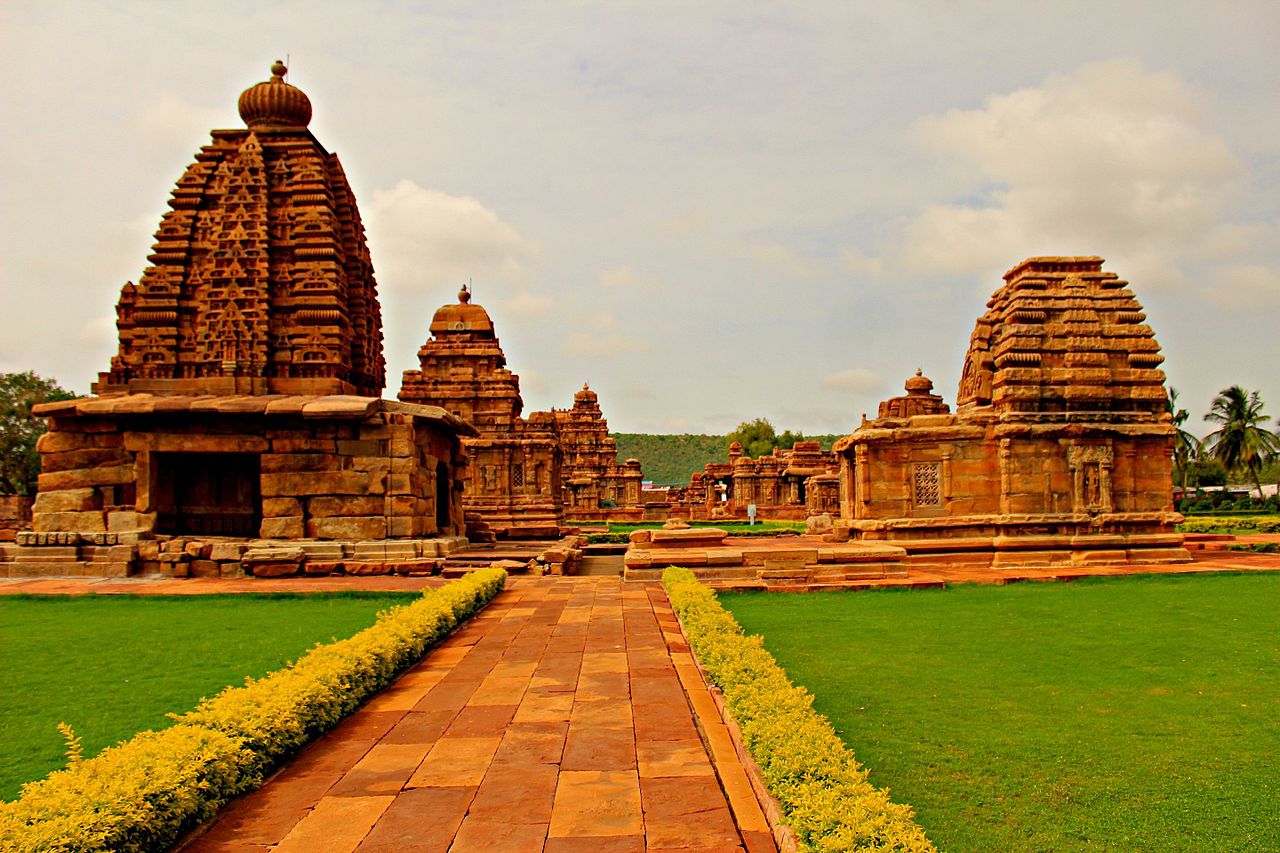
Listed Year: 1987
This Karnataka monument is a cluster of Hindu and Jain temples from the 7th and 8th centuries CE with the Hindu temples being dedicated to Lord Shiva. The architecture also contains components of characteristics of Vaishnavism and Shaktism.
In the temple inscriptions, Vedic and Puranic themes are shown together with Purana legends such as Ramayana, Mahabharata, and many more. A solitary Jina is a Jain temple. The temples of Papanatha and Virupaksha represent an unparalleled confluence of the styles North and South. Due to the beautiful combination of northern and Southern architecture, the Site was named a World Heritage Site by UNESCO.
16. Elephanta Caves, Maharashtra
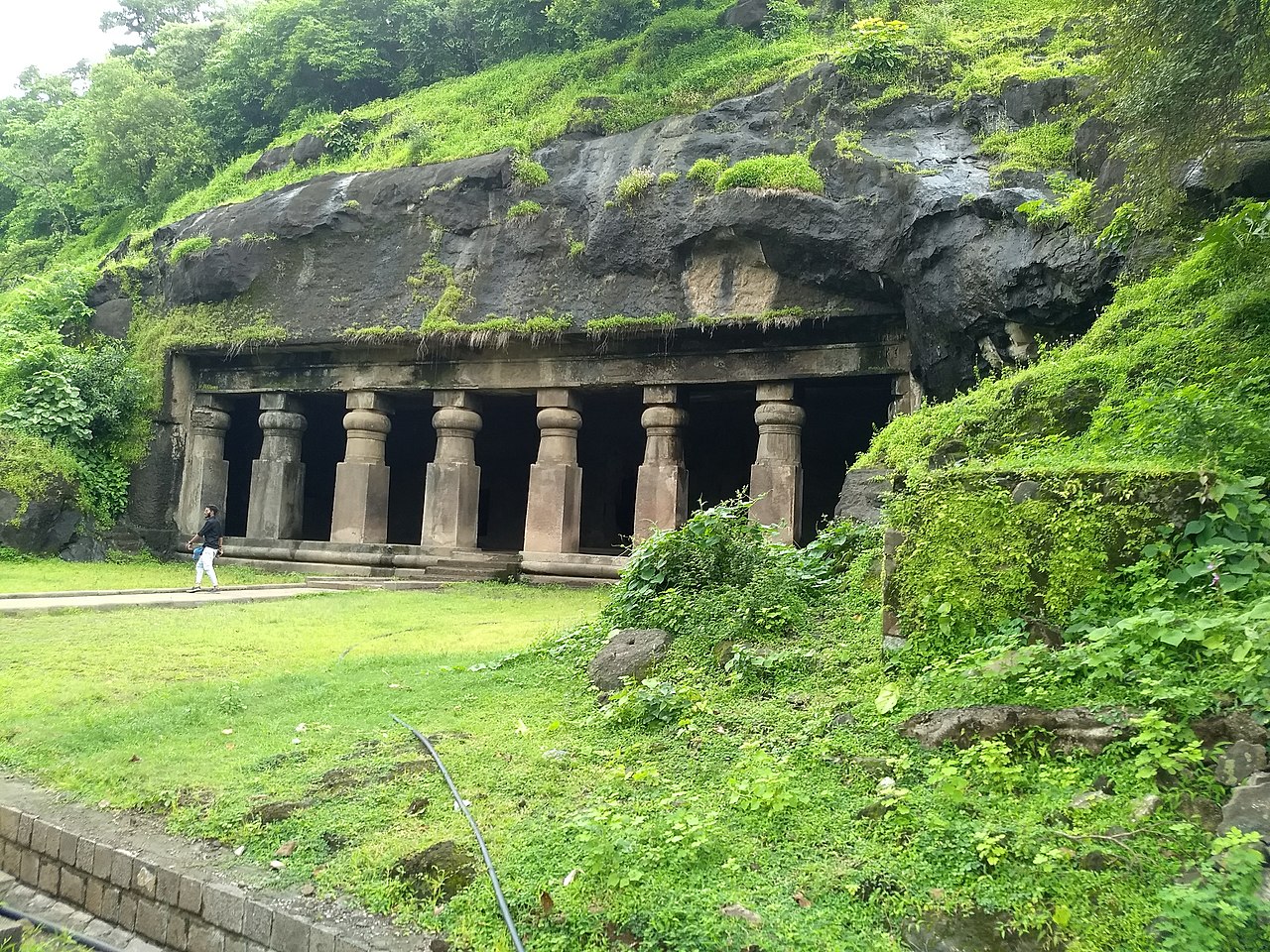
Listed Year: 1987
On an island in the Arabian sea, not so far from Mumbai City are the Elephanta Caves. Gharapuri is particularly notable for its system of sculpted caves on Elephanta Island. The rich cultural past of the Indian civilization may be seen through countless archaeological remnants. These caves are renowned for their rock-cut sculpture and carvings depicting Shiva as the Creator and the Destructor of the Universe. The most notable of the caves was Cave 1, where at the entrance of the cave, you can view the Sadashiva, representing the Creator, Preserver and Destroyer, the three facets of Shiva. The caves are fashioned from solid basalt rocks, located 10 km east of Mumbai city.
17. Sundarbans National Park, West Bengal
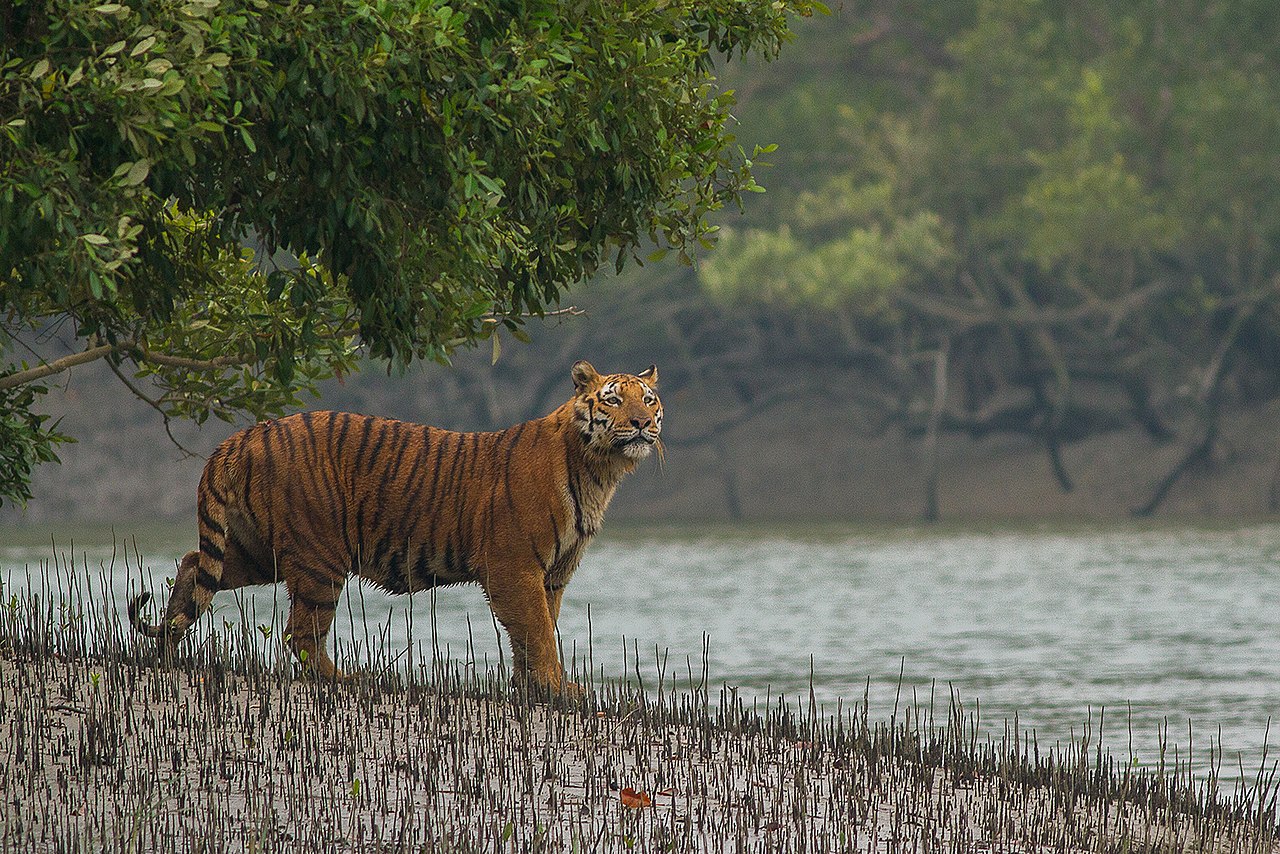
Listed Year: 1987
The Sunderban National Park, famous for its Royal Bengal Tigers, is a notable Tiger reserve and biosphere reserve in the state of West Bengal. It is located on the Bay of Bengal, on the Sunderban Deltas which was formed by the Ganges River. It is one of India’s largest reserves covered mainly by dense forests of mangroves. It is also the biggest forest reserve of mangroves in the world. There are also other animals including Gangetic dolphins, spotted deers, wild boar and other mammal and amphibian species along with being the home of the highly endangered Royal Bengal Tiger. Another attraction of this reserve is the unique saltwater crocodile. India’s tigers have the highest population in this place. This is one of the most significant Indian heritage sites for all these reasons.
18. Nanda Devi and Valley of Flowers National Parks
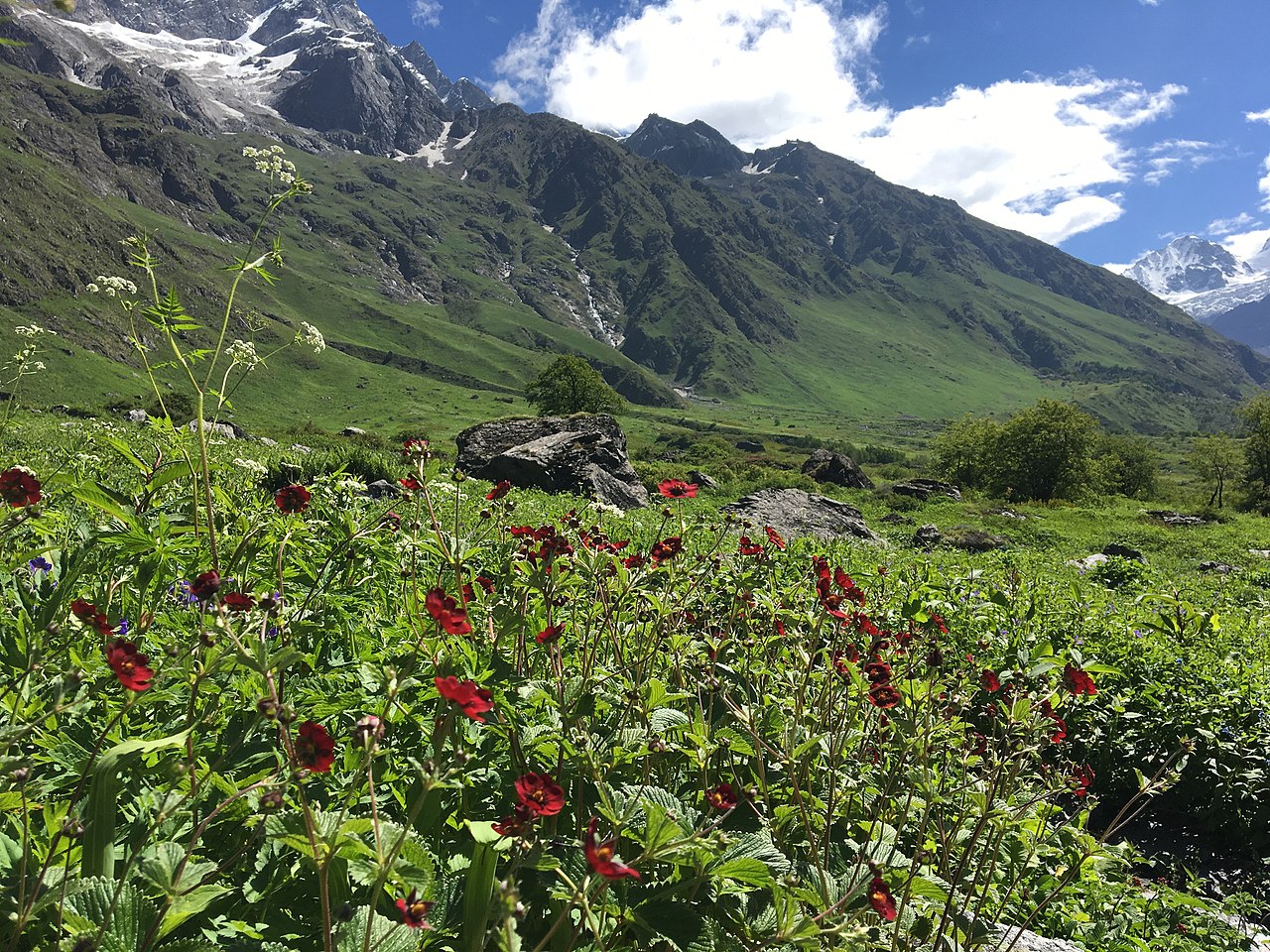
Listed Year: 1988
The Nanda Devi is Uttarakhand’s highest mountain and India’s highest peak because it is known that the Kanchenjunga shares part of its boundary with Nepal. There are two mountain summits with Sunanda Devi being the eastern peak. It was important from the age of Puranas and Upanishads, which was pointed out many times by the Hindus in their mythological work. It is 6400 metres high above sea level.
The Flowers Valley is a National Park close to Nanda Devi summit, up to 8 km long and 2 km wide. The variety of blooms that stretch the whole valley almost like a bedsheet is recognised and appreciated widely. Some unique endangered creatures such as Asian Black Bear, Snow Leopard, Brown Bear, Musk deer, Red Fox and Blue Sheep can also dwell here. More than 600 species of flora and more than 520 animal species are located in this World Heritage site in India.
19. Buddhist Monuments at Sanchi
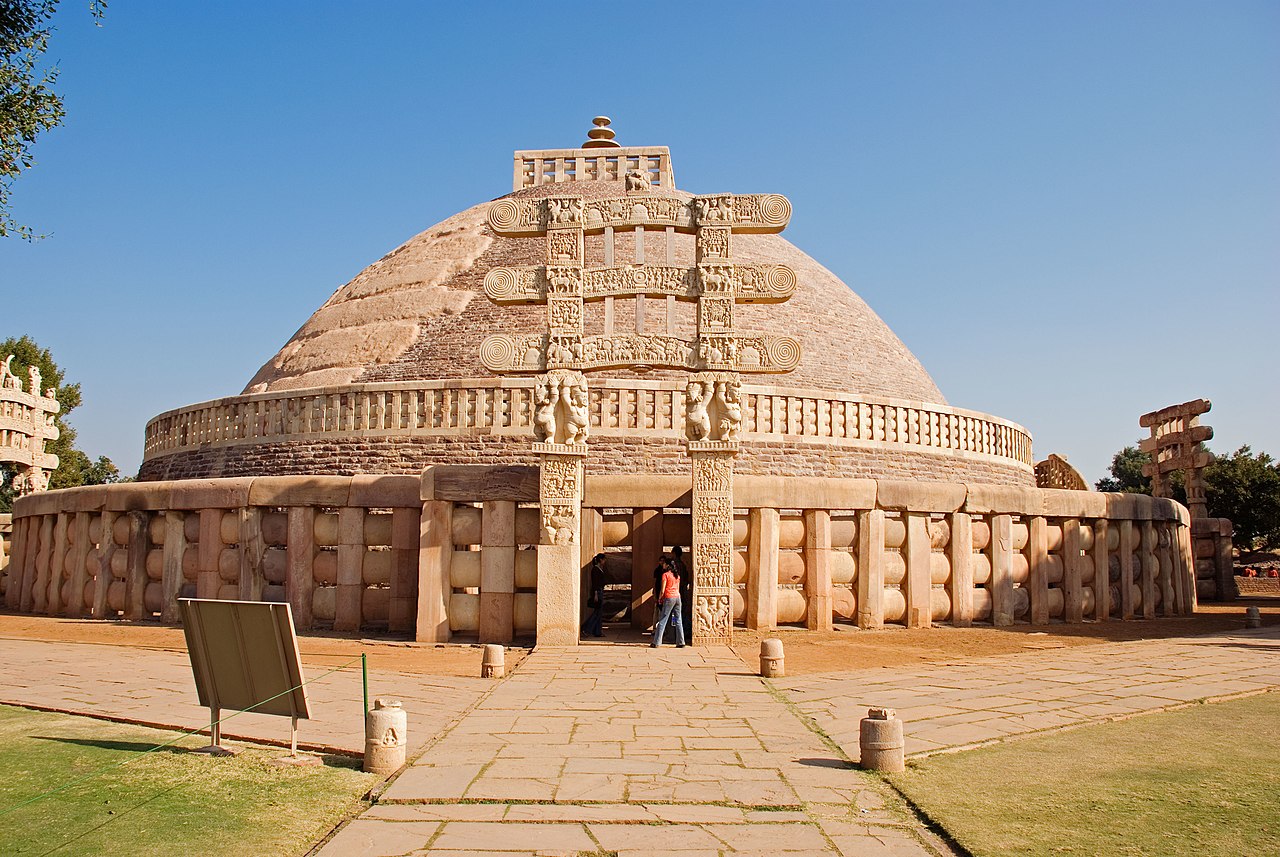
Listed Year: 1989
In 1989, the Sanchi Buddhist Monuments were named a World Heritage site by UNESCO. These include Stupas, monasteries, monolithic pillars of Ashokan, temples, monuments and sculptures. Lush gardens surround the refuge. The Stupas are built from the top of the hill and are mainly dedicated to Buddha’s teachings.
The Four Gateways to the Stupa are surrounded by beautiful architectural sculptures. A good example of the Greco-Buddhist architectural style is the Ashokan Pillar with its four lions. A museum with various artefacts utilised by the monks is also available.
20. Humayun’s Tomb, Delhi
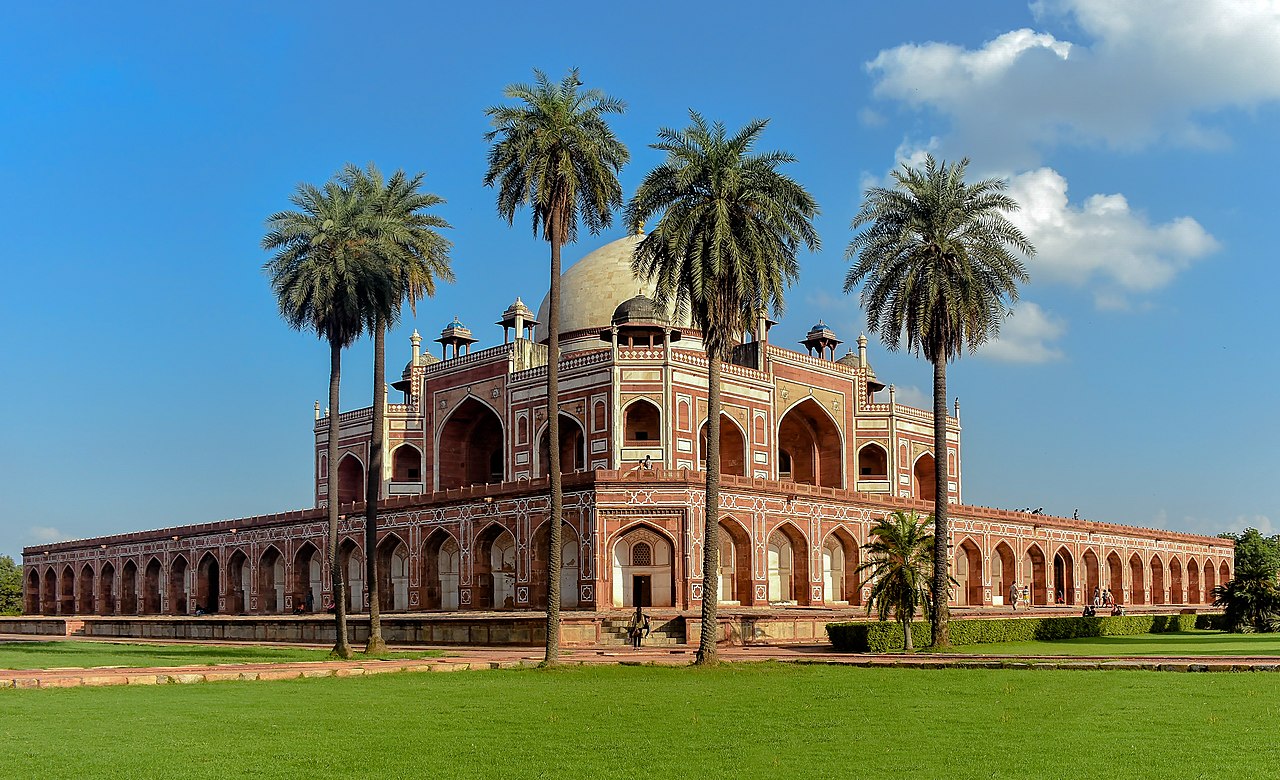
Listed Year: 1993
In 1993, Humayun’s Tomb, the first garden grave in India, was proclaimed a UNESCO World Heritage Site. Humayun’s Tomb is a magnificent fusion of Islamic architecture in Persian, Turkish and Indian styles. It’s a classic Bagh Char garden and has four gateways that divide the garden into four smaller portions.
At the centre of the garden on a 7m high stone platform sits the great building, fully symmetrical. The construction has a red support stand and a white marble dome. The tomb is 47 metres in height and 91 metres in width. Two double-storey arched doorways conduct the access to the tomb.
21. Qutub Minar, Delhi
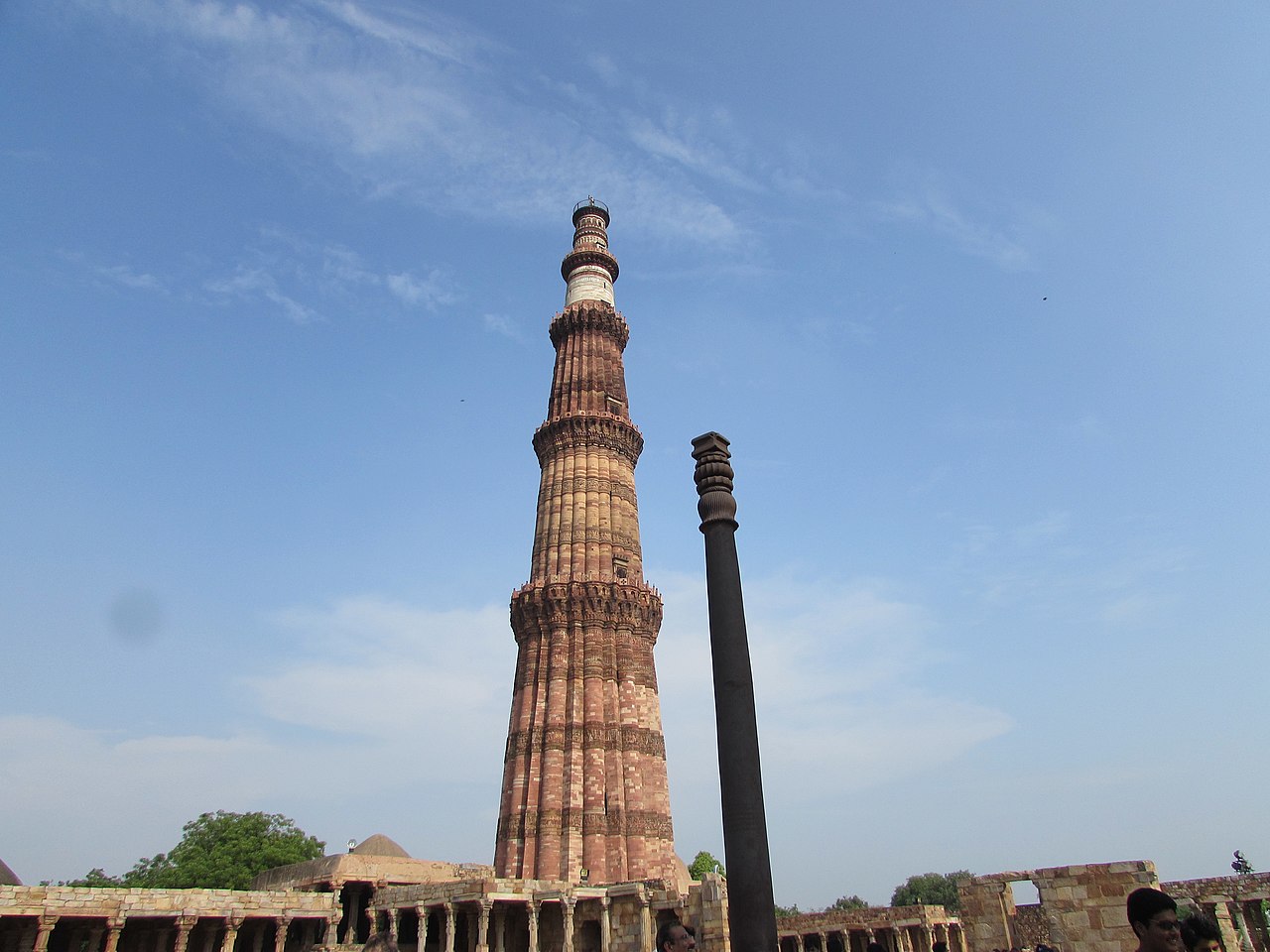
Listed Year: 1993
One of the world’s most famous sites in India, the Qutub Minar was built in 1193 in the wake of the defeat of Delhi’s final Hindu kingdom by the First Muslim monarch, Qutub-ud-din Aibak of the Mamluk Dynasty. One of many other buildings in the Qutub complex, the Qutub Minar occupies the centre stage mainly because of its height. It is 73 metres in height and has a base diameter of 15 m and a top diameter of 2.5 m. It was created by Aibak to honour Qutbuddin Bakhtiar Kaki, the famed Sufi. The Quwwat Ul Islam mosque, built upon Lal Kot, remains from the former Hindu kingdom, is near the Qutub Minar and is also renowned as one of the country’s first mosques. It is also known for its encircling brick minarets. The Qutub Minar Complex is one of the earliest emblems known to Islamic Architecture in India.
22. Mountain Railways of India
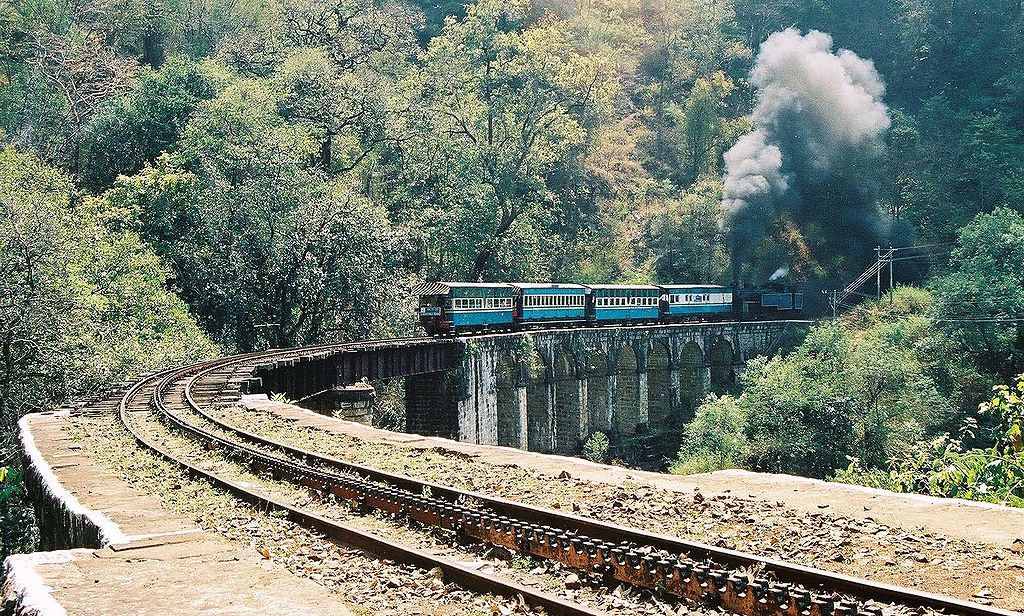
Listed Year: 1999, 2005, 2008
The UNESCO World Heritage Site of the Mountain Railways of India (1999), the Nilgiri Mountain Railway (2005) and the Kalka–Shimla Railway (2008) was recognised as UNESCO World Heritage Site in 1999, 2005 and 2008. . Darjeeling Himalayan Train is the first mountain passenger railway with indigenous engineering solutions. Modern technology was used on the Nilgiri Mountain Railway, which rose 326 metres to 2203 metres. A single-track, 96-kilometre-long operating rail in Shimla is called the Kalka Shimla Railway. North Bengal is one of Earth’s most magnificent scenic stations. One will enjoy the fun Toy Train, the lovely Tea plantations and long tunnels and tiger hills. They also traverse the most gorgeous scenery, and people love to go on a fun and romantic tour here.
23. Bodh Gaya, Bihar
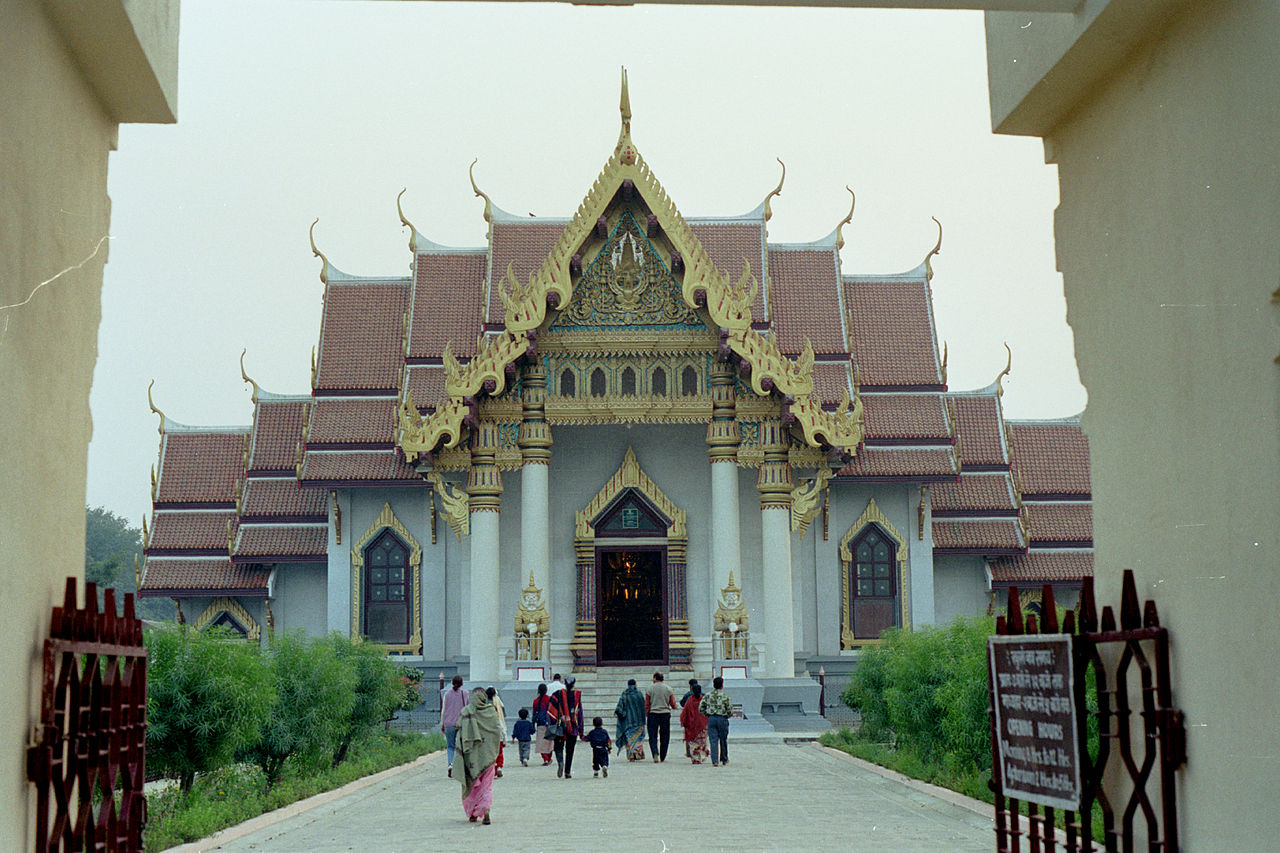
Listed Year: 2002
Bodh Gaya lies almost 96 km from Patna, Bihar and is a UNESCO recognised Indian heritage site. It is vital to the Buddhists for religious life, as it was the location for the enlightenment of Mahatma Buddha. Siddhartha became the Gautam Buddha and the sacred Bodhi Tree was a place for his enlightenment. During the reign of Ashoka the Great in 250 AD, the renowned Mahabodhi Temple was erected. This is one of the first temples of Buddhism. The Mahabodhi complex in Bodh Gaya currently features the Mahabodhi temples, 50 metres in height and is encircled by several old Votive Stupas and includes the Vajrasana, sacred Bodhi Tree and further six divine locations. Because of all this, Bodh Gaya is the most sacred place for Buddhists in pilgrimage.
24. Rock Shelters of Bhimbetka

Listed Year: 2003
Bhimbetka Rock Shelters was named a World Heritage Site by UNESCO in 2003. The Bhimbetka Rock Shelters is a palaeolithic, mesolithic and historic archaeological site. The area consists of 7 hills and 750 rock shelters, covering 10 km. One noteworthy element of the shelters enclosed by quartzite towers is the auditorium cave. There are several paintings in the shelters, some of which are thought to be over 1000 years old.
25. Chhatrapati Shivaji Terminus, Mumbai

Listed Year : 2004
The Unesco World Heritage Site of Chhatrapati Shivaji Terminus was designated in 2004. It was created between 1878-1888 by taking inspiration fromVictorian Italianate Gothic Revival and traditional Mughal buildings by Frederick William Stevens, which made Bombay a commercial port of India. The plan of the terminal with Italian and Victorian components in some ways reminds us of the architecture of the Indian palace and is a remarkable example of the fusion of a western and Indian art style. It was titled formerly Queen Victoria and renamed Shivaji Terminus Chhatrapati in 1996 to recognise Shivaji Bhonsle I. There are 18 platforms in the terminus. Seven platforms are used by suburban trains while eleven platforms are used for long-distance trains.
26. Champaner-Pavagadh Archaeological Park
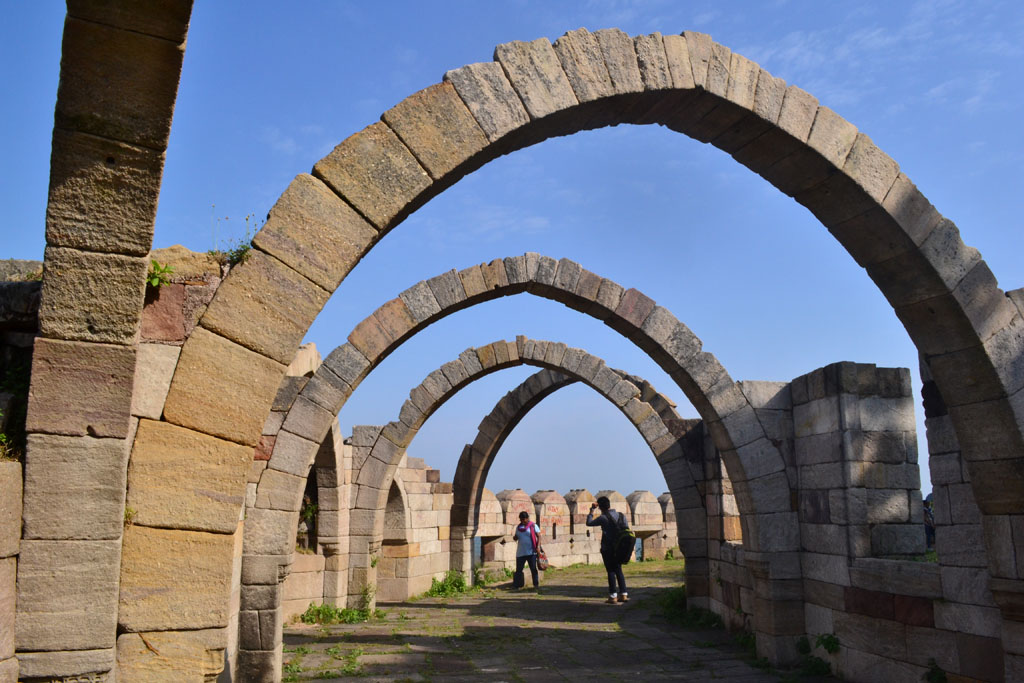
Listed Year: 2004
A World Heritage Site, located in the Panchmahal region of the Indian state of Gujarat is the Champaner-Pavagadh Archeological Park. It’s historically and culturally an important site centering around the town of Champaner or Muhammadabad founded by Sultan Mahmoud Begada of Gujarat. This site is the only Islamic pre-Mughal city that has not changed. A substantial chunk of Champaner-Pavagadh is also considered of legendary significance. It consists of 11 distinct types of structures, including mosques, temples, tombs, portals, fortresses and walls, palaces and pavilions, the Helical Wells and the 16th century Custom-house. The change from earlier Hindu architectural forms to Muslim culture and architectural style can be observed. Some of the old Chalcolithic Indian monuments from the Stone Age were also found in the park.
27. Red Fort Complex, Delhi

Listed Year: 2007
The Red Fort was built by emperor Shah Jahan when his capital moved from Agra to Delhi (or as Shahjahanabad was known at that time) in the centre of the ancient town of New Delhi. The fort was the Mughals’ political headquarters. Under Shah Jahan, the art and architecture of the Mughal reached great heights, as did the Red Fort. One can see the combination in the various elements of the Red Fort between Indo-Islamic, Timurid, Hindu and Persian forms of architecture. It consists of red sandstone, housing other buildings, such as the Diwan-i-Aam and the Diwan-i-Khas. One of the UNESCO World Heritage Sites in India, the Red Fort is controlled directly by the India Archeological Survey.
28. The Jantar Mantar, Jaipur

Listed Year: 2010
The Jantar Mantar was built in Rajasthan in the 18th century. The Rajput King Sawai Jai Singh from Rajasthan established it as an astronomical observatory in 1738. It is a collection of 19 astrological tools, including the largest stone Sundial in the globe. They are all man-made instruments. The observatory consists of tools used for calculating the celestial coordinate systems, the local horizon-zenith network, the ecliptic and the equatorial systems. This landmark is one of India’s best-preserved observatories and an outstanding representation of Indian scientific and cultural heritage.
29. Western Ghats
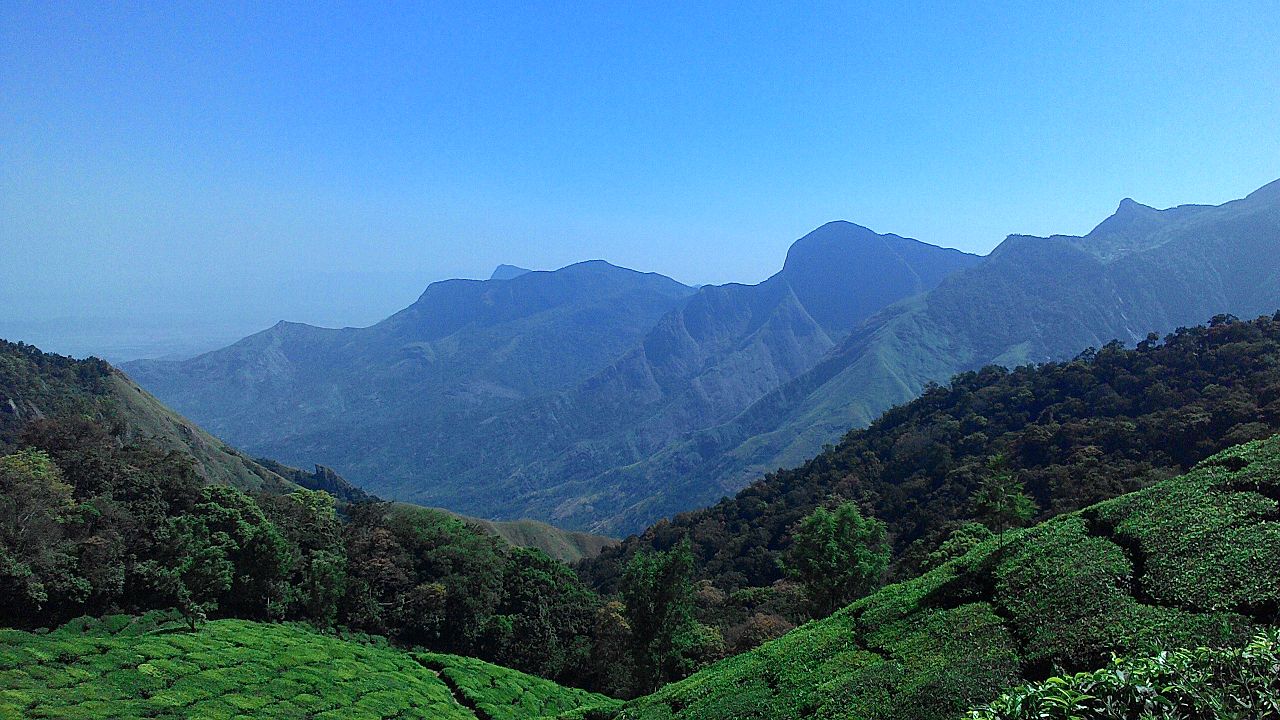
Listed Year: 2012
On the west bank of the Indian peninsula resides West Ghats or the Sahyadri Mountain Chain. The Range runs on the western bank of the Deccan Plateau north to south. It forms national parks, forest reserves and wildlife reserves of Kerala, Karnataka, Tamil Nadu and Maharashtra. The hills occupy 160,000 square km, cover 1600 km in length, 100 km in width, and 1200 metres in height. It is extremely diverse in its biological environment and ranks as one of the eight top 8 in the hot spot world. There are around 325 flora and animal species in the forests of the Western Ghats, including some rare species of plants and animals that have been critically endangered.
30. Hill Forts of Rajasthan
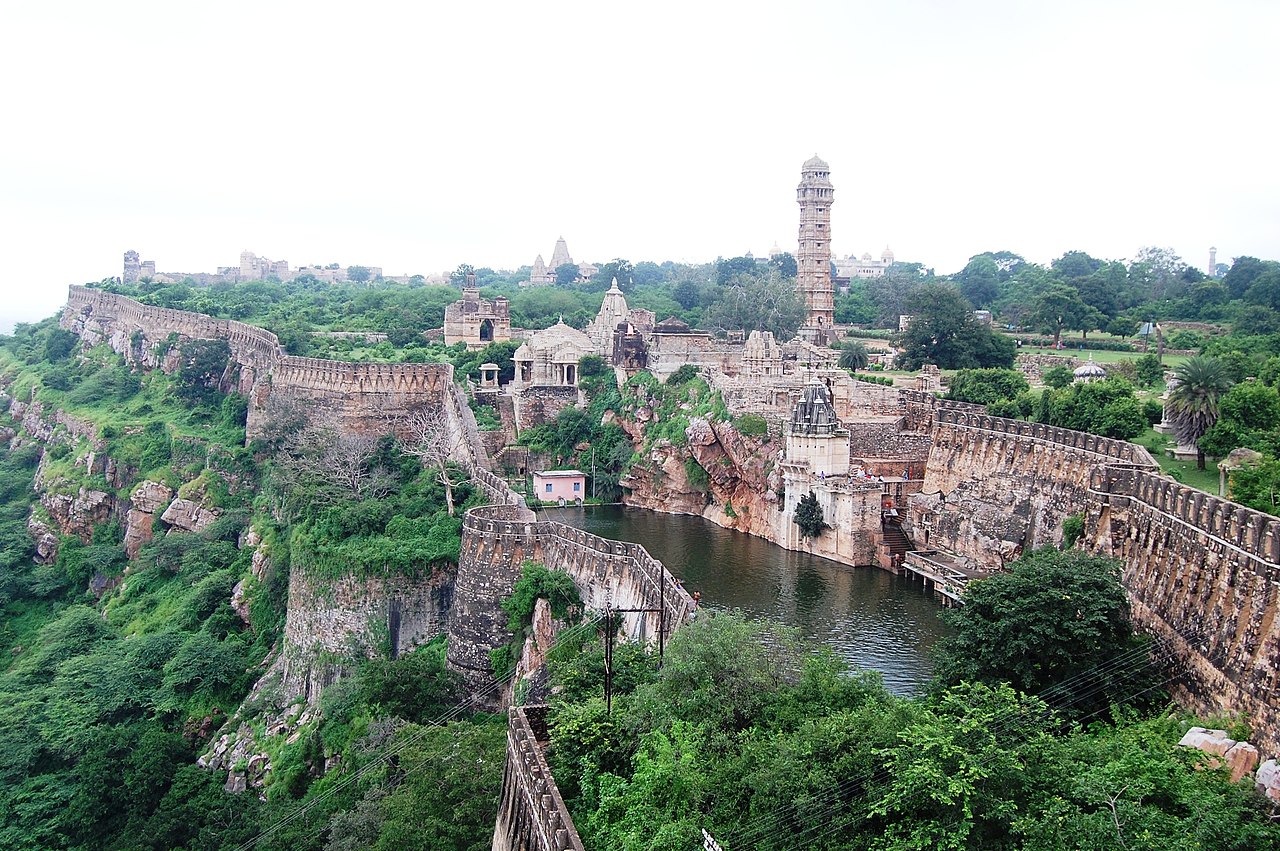
Listed Year: 2013
The Rajasthan Hill Forts are known for their unique Rajput architecture of military defence. There are six spectacular fortresses in Chittorgarh, Kumbhalgarh, Ranthambore Fort, Gagron Fort, Amber Fort, and Jaisalmer Fort. They are situated in Rajasthan on the stony Aravalli Mountains. The length and size of the forts are adequate to illustrate the authority and strength of the leaders and chiefs of the Rajputana. These forts have powerful defences. It was nearly like a mini-city within the walls of the fort. The markets, bases, palaces, temples, towns and centres of commerce were numerous. And we know that because some of them survived. In addition, these fortresses contained unique water storage and harvesting facilities that are still used today. It is also recognised to be the film’s location, The Dark Knight Rises, and a few movies including ‘Shonar Kella’ by Satyajit Ray.
31. Rani ki Vav, Gujarat
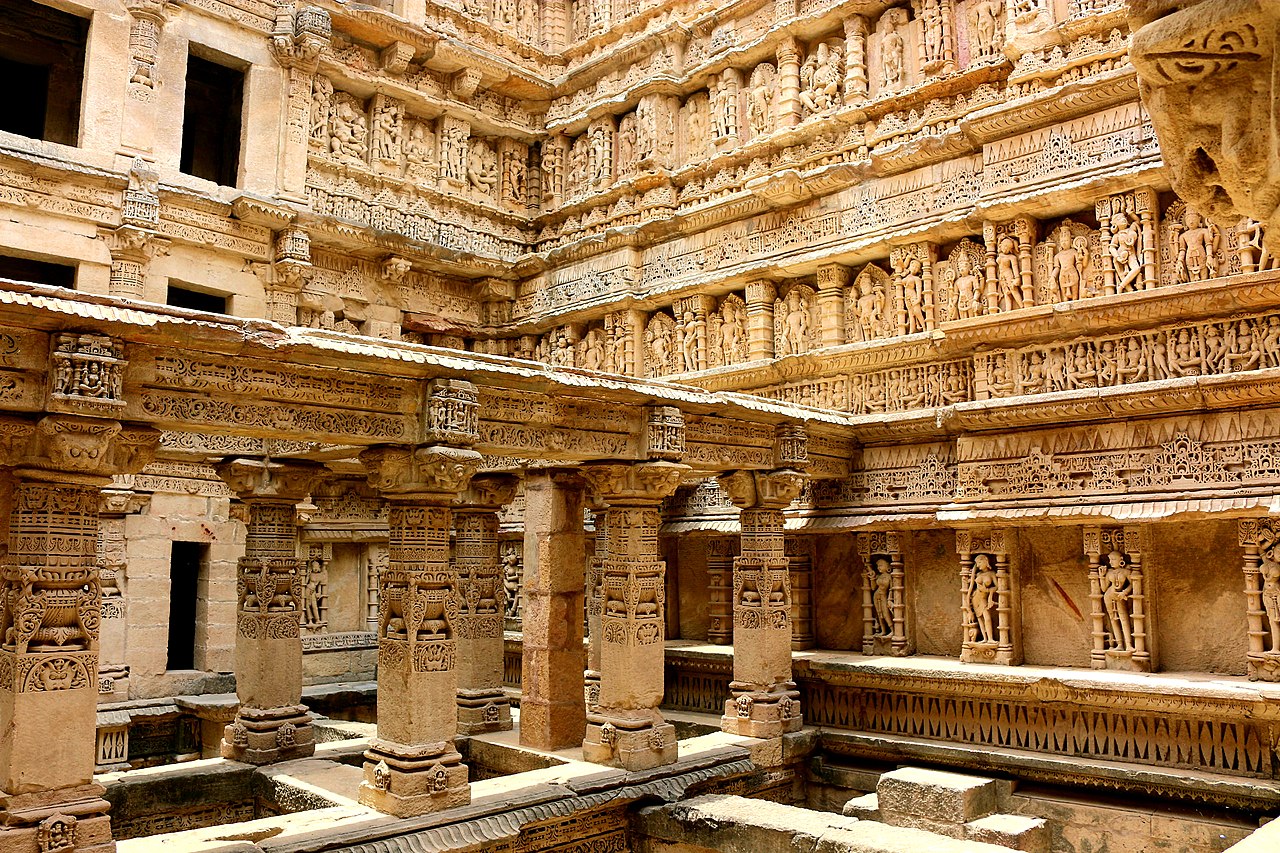
Listed Year: 2014
UNESCO declared Rani ki Vav as a World Heritage site in 2014. Rani ki Vav is a stepwell on the banks of the Saraswati River in the Paltan town of Gujarat. The stepwell is a temple that is designed as reversed. The stepwell was built in 1063 to memorialise her husband Bhimdev I by Rani Udayamati from the Chalukya Dynasty. It consists of seven stair levels. The building includes the architecture of Maru-Gurjara which demands complicated levels of technology and skill.
The well measures around 65m long, 20m wide and 28m deep. There are around 1500 big and minor sculptures with various mythological characters and other religious and secular symbols.
32. Great Himalayan National Park

Listed Year: 2014
The Great Himalayan National Park was designated a UNESCO World Heritage Site in 2014. It is situated in Kullu, Pradesh in Himachal. It covers an area of approximately 1171 square km, where the diversity of animals is wealthy and plentiful. Together with other animal species, 31 species were registered of mammals, 181 species of birds, 9 amphibians, 11 annelids, 127 insects, and 17 molluscs. The park’s wide altitude supports a vast array of flora and fauna. The World Heritage Site is proclaimed by UNESCO for its remarkable importance for the preservation of biodiversity.
33. Archaeological Site of Nalanda Mahavihara, Bihar

Listed Year: 2016
Nalanda archaeological site in Bihar, from the 3rd century BCE to the 13th century CE, was a learning centre and a Buddhist monastery. When one wanders about campus, which is a manifestation of a glorious period, one can witness the remnants of stupas, shrines and viharas. Nalanda has promoted Buddhism’s progress as a religion and has remained a residence of knowledge for 800 years. Scholars from all over the world, known for their formalised Vedic study, previously attended the world’s first residential university. This is the second UNESCO World Heritage Site in Bihar that has made it even more visible in the Indian Tourism Map.
34. Khangchendzonga National Park, Sikkim

Listed Year: 2016
Khangchendzonga National Park was declared a World Heritage site in 2016 and accounts for a total of 35 world heritage sites in India located in the Himalayan districts North and West Sikkim in the lovely state of Sikkim in the North-East. It covers a wide area of over 850 sq. km and has an elevation of 1829m up to 8500m above sea level. Also known as the Kanchenjunga National Park (and Kanchenjunga’s biosphere reserve). National Park Khangchendzonga has the 3rd highest peak in the world, the Kanchenjunga Peak. The national park is well-known for its vegetation and animals with sometimes visible snow leopards. There are a few trekking paths for trekking lovers in this national park.
35. The Architectural Work of Le Corbusier, Chandigarh

Listed Year: 2016
In 2016, Le Corbusier’s architectural work was declared a UNESCO World Heritage site. The Chandigarh Capitol complex is a governmental facility located in Sector 1 in Chandigarh, Punjab. It consists of three buildings, three monuments and a lake, an architectural work of Le Corbusier Architecture. The buildings are made up of the Legislative Palace, a Secretariat building, an open-hand monument and a shadow tower.
36. Historic City of Ahmedabad
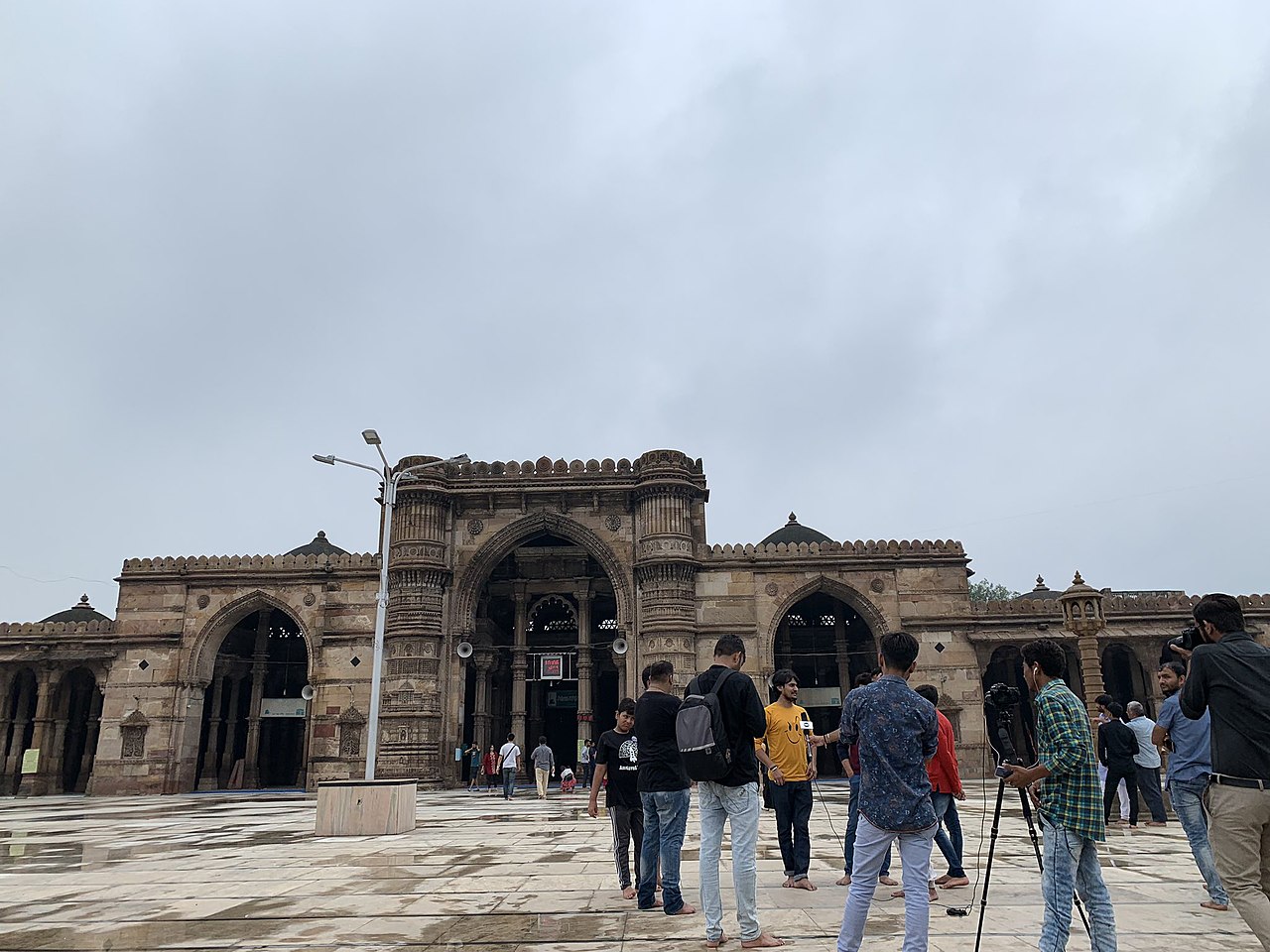
Listed Year: 2017
In 2017, the historic City of Ahmedabad, the first city of India to enter the list, was designated a UNESCO World Heritage Site. Often referred to as Old Ahmedabad, the capital of their kingdom, was founded by one of the rulers of the Sultanate of Gujarat. The city’s architecture, its old forts and gateways are located on the banks of the Sabarmati River and represents the rich architectural heritage of the sultanate era.
37. The Victorian and Art Deco Ensemble of Mumbai
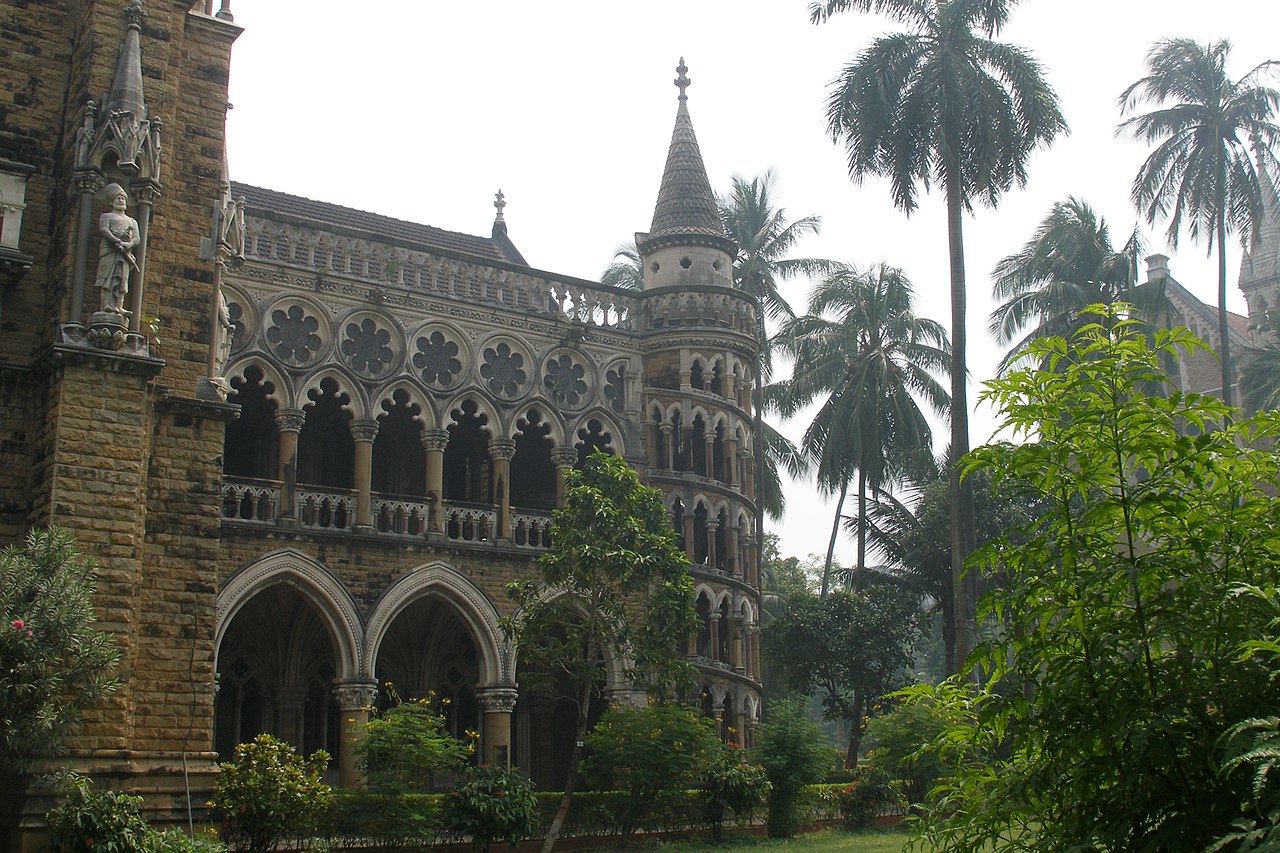
Listed Year: 2018
A collection of 94 structures of high cultural interest, which are situated in the Mumbai Fort Area, around the Maidan Oval, previously known as the Esplanade, has been added to the list of heritage sites in June 2018. The Oval is flanked on the east by Victorian neo-gothic buildings from the 19th century, among them the Bombay High Court, the University of Mumbai’s Fort Campus, the Old Secretary’s building. The Rajabai Clock Tower, together with the Watson’s Hotel, David Sassoon Library and the Elphinstone College, is also a notable landmark in the City of Dreams. The Art Deco structures of the 20th century stand right on the western side of the Arab Sea.
The latter consists mainly of residential structures in private ownership and the renowned Eros film – the building which kicked off the rehabilitation of Back Bay on the Marine Drive in 1935. The contrast in style of the two independent parts of the Mumbai Victorian and Art Deco Ensembles is a steady change in creative aspirations which gloriously shine over the metropolis and have thus acquired their position in the UNESCO World Heritage List.
38. Jaipur

Listed Year: 2019
UNESCO declared the city of Jaipur as a World Heritage Site. Jaipur – The pink city in Rajasthan state, with its beautiful architecture, fortifications, monuments, palaces, art and crafts, culture, astrological significance and much more, distinguishes it from other Indian cities. The architectural plan for the city was taken from Western countries on the paradigm of the Grid Plan.
The major streets of all structures, such as markets, temples, stores, etc, have uniform façades. The city’s urban planning also takes elements from Hindu and Mughal civilizations. It is a big business town yet protects the interests of local craftsmen and traditions.







